




N o 52 From Groupie Freaks to Tumblr Geeks | 18 The Future Is Funky: A History of Afrofuturism in Music | 20 The Revival of Pop Music | 43 N o 68 Fiona Apple Discography | 30 Tastemakers Debates: Olivia Rodrigo | 36 The Silencing of Coconut Mall | 40 northeastern students on music
Get Involved
E-Board President
Angela Lin
Terrance Dumoulin
Willa Shiomos
Emily Gringorten
Emily Kobren
Emily Zakrzewski
Want to become a Tastemaker? Click on tastemakersmag.com
Editor-in-Cheif
Art & Design
Alia Ziae-Mohseni
Emlyn Griffiths
Emma Lawson
get involved
Snapped some awesome photos at a concert?
Email them to tastemakersphoto@gmail.com
Heard an album that really got you thinking? Send a review to tmreviews@gmail.com
Get More
Can’t get enough? Check out more original content on tastemakersmag.com
Become a fan on Facebook at facebook.com/ tastemakersmag
Follow us on Instagram: @tastemakersmag
Follow us on Twitter at twitter.com/tastemakersmag
Tastemakers Music Magazine
232 Curry Student Center 360 Huntington Ave. Boston, MA 02115 tastemakersmag@gmail.com
Grant Foskett
Art Directors
Jenny Chen
Megan Lam
Promotions Director
Sofia Maricevic
Photo Director
Emily Gringorten
Assistant Photo Director
Kimmy Curry
Staff
Features Editor
Willa Shiomos
Reviews Editors
Ethan Matthews
Neeloy Bose
Interviews Editor
Desmond LaFave
Social Media Directors
Hannah Lowicki
Matthew Rose
Outreach Coordinator

Emily Greenberg
Staff Staff Writers
Alexandra Sumas
Amy Oh
Andrew Quercio
Bobby Hyland
Charles Stein
Chelsea Henderson
Dakota Castro-Jarret
Desmond LaFave
Ethan Matthews
Fisher Hunnewell
Grant Foskett
Hannah Lowicki
Henry Bova
Jess Gwardschaladse
Julia Towne
Katherine Miner
Kennel Patterson
Lacie Foreht
Lily Elwood
Lucas Cooperman
Nora Holland
Neeloy Bose
Rachel Cerato
Camille Wimpe
Catherine Terkildsen
Elli Lahdesmak
Emlyn Griffths
Haidyn Redmond
Jenny Chen
Jessica Xing
Julia Galang
Laura Mattingly
Maia Fernandez-Baigun
Megan Lam
Nick Alonzo
Portia Hubregsen
Shauna Oriandi
Sydney Tomasello
Sarah Liu
Xin Li
Promotions
Alayna Thomas
Alexa Rand
Allison Choi
Anna Chalnick
Arman Kapadia
Caleb Lee
Carla Delgado
Chelsea Henderson
Daphne Korcuska
Emily Greenberg
Genevieve Kopp
Hannah Lowicki
Harry Gould
Jenny Chen
Jessica Gwardschaladse
Kellie Woo
Leena Gupta
Matthew Rose
Michael DeVine
Nicholas Lombardi
Niyati Parikh
Ronnie Efremov
Roshni Subramonian
Rosie Scott
Sofia Kolobaev
Sofia Maricevic
Trevor Gardemal
Photography
Amanda Stark
Ana Sang
Ashlynn Braisted
Brinda Dhawan
Cali Cardenas
Cayla Hoang
Charlotte Hysen
Coby Sugars
Dana Murtada
Emily Greenberg
Garrett Diegnan
Gianna Gioia
Hang Nguyen
Helen Cai
Joe Jackowski
Julia Finocchiaro
Kelly Thomas
Kimmy Curry
Mukki Gill
Nick Alonzo
Olivia Leon
Owen Hudson
Risa Tapanes
Sadhana Pakala
Sadie Parker
Sammie Cirillo
Sebastian Wicke
Seha Khan
Sophia Seremetis
Sumner Strumph
Swasti Dadhich
Stuti Phalahari
Taliyah Fox
Vanessa Chalabi
Verena Calista Irawan
Wanja Njama
Meet the Staff About Listening to Quote

Harry Gould
Position Promotions
Major International Business, Marketing and Entrepreneurship
Graduating Spring 2022
Favorite Venue Irving Plaza, NYC
Tastemaker Since Spring 2022
Sarah Liu
Position Design
Major Journalism
Graduating Spring 2025
Favorite Venue Hollywood Bowl, CA
Tastemaker Since Spring 2022
Orla Levens
Position Content

Major Political Science
Graduating Spring 2022
Favorite Venue Lincoln Hall, Chicago
Tastemaker Since Fall 2021
Cayla Hoang


Position Photo
Major Health Science
Graduating Spring 2025
Favorite Venue Royale, Boston
Tastemaker Since Fall 2022
Fishermans LONG SEASON
Disclosure
Settle Parquet Courts Wide Awake!
Remi Wolf “Liz”
Rico Nasty “Countin’ Up”
Chloe x Halle Ungodly Hour
“I really don’t like deer.”
Amber Mark “FOMO”
Black Country, New Road
“Chaos Space Marine”
Bill Wurtz fly around
“Who’s on aux in IV dining hall?”
Mura Masa ft. Bonzai “What If I Go?”
Gorillaz “On Melancholy Hill”
Outkast
“GhettoMusick (Radio Mix)”
“I hope this email finds you well.”
“tea”
 Claud, Brighton Music Hall
Photo by Kelly Thomas (Environmental Science)
Claud, Brighton Music Hall
Photo by Kelly Thomas (Environmental Science)
Cover Story
26
Scaring and Scoring: The Dual-Edged Music of Trent Reznor and Atticus Ross
From their work as Nine Inch Nails to soundtracks of movies like The Social Network, Trent Renzor and Atticus Ross have achieved an impressive duality in their discography.
Features
Crossover: The Struggle to Get Foreign Language Songs into the American Mainstream
Though popularity for foreign language songs has increased in recent years, the struggle for these songs and international artists to break into the American charts has continued.

15 Seconds for Fame: The Impact of TikTok on The Music Industry
For better or worse, TikTok has changed the marketing landscape for the music industry. While boosting artists’ popularity, the social media platform’s quick, 15-second nature has simultaneously resulted in many negative effects.
Perreando Elle Misme: How reggaeton has veered off course, and artists correcting its path
Reggaeton has often been surrounded by misogynistic and heteronormative attitudes, but artists like Ivy Queen and JEDET are bringing a new perspective to the genre.
Say So or Say It Ain’t So?: Travis Barker’s TikTok Terrain
“Aside from his work as blink182’s drummer, Travis Barker has continued to remain relevant with his involvement in the modern pop-punk renaissance. ”
Azealia Banks: Queen of the New York Renaissance
“Since her debut single “212” was released in 2011, Harlemborn rapper Azealia Banks has been known not only for her iconic discography, but also her infamous feuds.”
Editorials
In “Crying in H Mart,” Michelle Zauner Learns to Nourish Body and Soul
“Japanese Breakfast lead singer Michelle Zauner reflects on her complicated relationship with her mother in her heartbreaking, intimate autobiography.”
The Silencing of Coconut Mall – Nintendo’s Refusal to Stream Their Soundtracks
Despite the incredible popularity of tracks from Mario Kart Wii, it’s impossible to directly stream the original soundtracks from any of Nintendo’s video games.
Interviews
Reviews
42 47
Show Reviews
Louis Tomlinson, Tool Album Reviews
FKA Twigs, Denzel Curry, Charli XCX
Etcetera
18
In Defense Of: Eurovision Song Contest
Many may look down on Eurovision for its supposed low-quality music and inability to create international superstars, but there’s no denying the song contest is popular, entertaining, and an artform in its own right.
Charlie Hickey
Hickey recently sat down with Tastemakers to talk about his new label, touring, and his upcoming album to be released later this year, Nervous at Night.
22 30 36
Reinventing the Musical: In Defense of Jukebox Musical Movies
Though many may consider jukebox musicals like Across the Universe, Mamma Mia, and Moulin Rouge silly and illegitimate, the productions deserve credit for their artistry and creativity.
Fiona Apple Discography
Through the five albums in her 26-year career, Fiona Apple has transformed from a jazzy-pop singer to a reclusive, experimental musician. Tastemakers dissects the Grammy award-winning artist’s discography.
Tastemakers Debates: Olivia Rodrigo
Tastemakers writers argue the case of Olivia Rodrigo, whose meteoric rise to success has drawn the attention of fans and critics alike.
Table of Contents
9 12 14 24
19 40 16 20
Su Sa Rockommend Rina Sawayama May 5 @ Royale Fresh off of her collaboration with Charli XCX, British experimental pop icon Rina Sawayama is coming to Boston. Check her out at the Royale if you don’t want to be “Akasaka Sad!” Trevor Gardemal (Journalism) Calendar May 1 2 3 Olivia Rodrigo Roadrunner Palace Paradise Rock Club HONNE House of Blues 4 Aly and AJ House of Blues Peter McPoland The Sinclair 5 Rina Sawayama Royale 6 Disclosure Roadrunner Dave House of Blues The Regrettes Big Night Live 7 Ricky Montgomery The Sinclair Tai Verdes Big Night Live Code Orange Paradise Rock Club 8 Jacob Collier House of Blues 9 Gavin DeGraw City Winery 10 John Mayer TD Garden Molchat Doma Royale 11 Interpol Roadrunner Rex Orange County Leader Bank Pavilion ROLE MODEL Royale 12 Beach Bunny House of Blues 13 Deftones Agannis Arena 14 Tori Amos Orpheum Theatre Remo Drive Brighton Music Hall 15 The Offspring House of Blues Raveena Brighton Music Hall 16 17 18 Freddie Gibbs Paradise Rock Club The Who TD Garden 19 Freddie Gibbs Paradise Rock Club Little Simz The Sinclair 20 21 22 23 24 The Walters Paradise Rock Club 25 26 J Balvin TD Garden 27 Foo Fighters Boston Calling 28 The Strokes Boston Calling 29 Metallica Boston Calling 30 31 Mo Tu We Th Fr Disclosure May 6 @ Roadrunner House music duo Disclosure is gracing Boston this spring at the Roadrunner venue. Chances are you’ve heard their smash hit “Latch” with Sam Smith. Touring off their 2020 album ENERGY, this show is sure to be absolutely electric and one you definitely won’t want to miss! Harry Gould (Marketing and Entrepreneurship)
If you think you don’t know Deftones, you’ve probably heard a sped up snippet of one of their songs on TikTok. Promoting their 2020 release “Ohms,” alternative metal band Deftones is taking on Agganis Arena on May 13th. You don’t want to miss this!
Lowicki (Marketing)
Following the release of her critically acclaimed album “Sometimes I May Be Introvert,” British rapper and singer, Little Simz is coming to the Sinclair. You will not want to miss her sure-to-be great performance on May 19!
June 1 Halsey Xfinity Center Aurora Roadrunner 2 3 The Lumineers Xfinity Center 4 Tim McGraw Xfinity Center T-Pain House of Blues Sara Kays The Sinclair 5 6 7 Paul
8 Paul McCartney Fenway Park Bastille Roadrunner 9 Ezra Furman Crystal Ballroom 10 mxmtoon Royale 11 mxmtoon Royale 12 13 Tove Lo Roadrunner 14 Benee House of Blues 15 16 17 18 19 20 Justin Bieber TD Garden 21 22 Tears for Fears Leader Bank Pavilion 23 Prateek Kuhad Crystal Ballroom 24 UMI The Sinclair 25 Machine Gun Kelly TD Garden 26 Big Time Rush Leader Bank Pavilion 27 28 29 30 LEON House of Blues Su Sa Mo Tu We Th Fr
McCartney Fenway Park
Deftones May 13 @ Agannis Arena
Hannah
Little Simz
May 19 @ The Sinclair
Sofia Maricevic (Finance and Accounting)
 SE SO NEON, Middle East
Photo by Ana Sang (Music Industry)
SE SO NEON, Middle East
Photo by Ana Sang (Music Industry)
The Struggle to Get Foreign Language Songs Into the American Mainstream
ROSALÍA is one of the most popular musicians currently alive.
19 million followers on Instagram and music videos that regularly gain hundreds of millions if not billions of views, it’d be untruthful to label her as a niche or underground artist. Despite her relatively large popularity around the world, ROSALÍA has yet to achieve a significant amount of crossover into the American mainstream. Her only hit on the Billboard charts thus far has been “Lo Vas a Olvidar,” her collaboration with Billie Eilish from last year. While the song did reach the impressive number four position on the Billboard chart, this likely had a lot to do with the immense popularity of Billie Eilish, as well as the fact that the song was made for an episode of the hit show
ROSALÍA isn’t the only example of musicians from other nations who have been unable to crossover into American music charts despite their massive presence internationally. Other examples include Chilean singer-songwriter Mon Laferte and Mexican musician Natalia Lafourcade, both of whom have large followings and have won Latin Grammys, but have found immense difficulty in breaking into the American music market.
Of course, Billboard isn’t the only way to measure an artist’s success, but the presence, or lack thereof, of an artist on the Billboard charts does help show the general American’s awareness of a musician and their songs. There are many possible reasons why ROSALÍA and artists facing similar challenges to her haven’t crossed over into the American pop sphere. For one, in general, it is quite difficult for artists from other countries to cross over into the American market. Even in countries like the United Kingdom that regularly produce artists who cross over into the American mainstream, they still have many artists and genres – such as UK Drill –that have largely stayed within their countries despite their popularity locally.
The difficulty to crossover into the American music market is exponentially increased when an artist’s music is in a different language than English. In recent years, the Billboard charts have begun to feature songs that aren’t primarily in English more frequently, but still, many non-English speaking artists are unable to find their way onto the American charts.

9
Designer: Elli Lahdesmaki (Design)
There are many smaller artists, both historically and currently, who have had equal if not greater struggle in crossing over into the American charts as ROSALÍA has had who would benefit just as much from it. There is no one reason for why it is so difficult for non-English songs to crossover; instead, it’s more a combination of several obvious and less obvious factors, many of which are tied to systemic issues within the music industry. One thing is clear though: the reason for the lack of crossover for these artists has little at all to do with the lack of willingness from the American public to listen to songs in different languages.
In 2013, Billboard made the decision to start counting the number of listens songs receive on music streaming services like Spotify into the way they calculate which songs end up on their charts. This has allowed the average music listener to have a greater say in what types of music ends up on these charts, and therefore have more influence over what gets played on the radio and exposed to more people. In the years since this decision, non-English songs have made up on average
1.7% of the songs on the year-end Hot 100 list. This number may seem laughably small until you check the years before 2013 and see that there has actually been a notable increase in the amount of non-English songs charting. This shows that Americans have no problem overall listening to songs in different languages, and in fact are one of the main forces that is actively increasing the amount of non-English songs that are entering the American pop music sphere.
So, if the American public is willing to listen to non-English music, then why aren’t there more songs in different languages on the charts? As mentioned before, this has likely more to do with much larger issues in the music industry itself and the way it interacts with the charts and radio. As much as the songs that appear on the Billboard charts are affected by what the average American is listening to, especially now, they are still heavily affected by large record labels and other power players in the music industry.
Historically, the American music industry hasn’t been the most welcoming to those outside of a WASP origin. When the charts were formed, genres like “race records,” later relabled to R&B and Hip-Hop, were coined to segregate black artists from the very white dominated charts and white focused radio stations. There are several complex reasons for why this practice was put in place. It was partially to not offend the sensibilities of the assumed wealthier white audience who consumed and bought the music that allowed the record labels and radios stations to make money. The main reason though was by keeping black artists within a smaller segregated market, record labels were able to give them manipulative contracts that allowed them to capture large amounts of profit from these artists who often didn’t get to see much of the money their music made. Due to the nature of these segregated markets, these artists often had no choice but to accept these exploitative contracts if they wished to get profit at all from their music.
It’s unfortunately quite difficult to find much information on the treatment artists who spoke different languages got in this earlier part of the music industry. Based on the treatment of black artists as well as America’s historic distaste for immigrants and those from different nations, it’s safe to say that musicians who spoke different languages, especially those who were people of color, were likely treated similarly to black musicians. There is some evidence of this with the existence of the Latin and Global Billboard charts.
Spring 2022 Feature 10
The existence of Latin and Global charts doesn’t seem harmful at first, and in fact, in some ways, might seem progressive. After all, how could charts dedicated to emphasizing artists who have gained popularity in Latin American countries globally be discriminatory to the very people they seek to highlight?

In some ways this assumption is right. Having this chart, along with radio stations that specifically play music from Latin America and around the world, does help raise the popularity of some artists who speak different languages. However, like the R&B and Hip Hop charts, the Latin and Global charts, along with the radio stations that play Latin and Global music, often serve to separate these artists from the regular charts
and top 40 radio play. It allows radio stations to play top hits, ignoring songs in different languages and pointing to the charts to excuse this.
As music sung in different languages slowly becomes more popular in America, it is likely that some of this music industryendorsed separation will disappear. It’s still important to call these flaws out though, because the struggle of many artists who speak different languages to crossover into America can only be addressed by calling out the way the music industry prevents many of these artists from having that chance in the first place.
11
• Dakota Castro-Jarrett (Political Science and Journalism)
15 Seconds for Fame: The Impact of Tiktok on the Music Industry




















“TikTok killed the music industry.” This statement has been oft repeated by disgruntled older generations, reminiscing on their own youth and the trends at the time. Video certainly killed the radio star, and TikTok, as a video form, is no exception. Songs have become shorter in order to have a better chance at turning into the next big thing. But as marketing teams have caught on to the trend cycle, artists have seemed to lose control of their craft, which has resulted in the making or breaking of their careers.
The trend cycle of popular music, once based highly upon radio play, is now heavily influenced by social media, particularly TikTok. On the app, sound bites from many of the biggest hits of the week play on repeat as the For You page pushes them to the top of the charts and the front of the human psyche. While songs often thrive in streams within the app, users commonly develop irrational hatred towards specific sound bites and the artists responsible for them. Among the most hated sounds as of late have been “abcdefu” by GAYLE, “I AM WOMAN” by Emmy Meli, and “space girl” by Frances Forever, all of which trended on the app in the recent past. The inherent repetition of a sound in the app, whether of quality or















not, frequently leads to a subconscious resentment for the song as a whole, and perhaps even the entirety of the artist’s repertoire. If potential audiences are not turned off of an artist’s expanded discography due to the oversaturation of a 15 second snippet, those who dare venture beyond the marketed sound bite often find themselves disappointed. Artists have taken the clipped nature of music on TikTok to their advantage, underproducing the majority of their song such that a small portion of a single shines in comparison. Notably, “Backyard Boy” by Claire Rosinkranz, whose introduction was used in countless genres of videos on TikTok, lacks substance beyond the viral clip, not containing much lyrical variation or a great deal of a melody at all. The clip on TikTok likely gained traction because of its upbeat instrumentals and idealistic lyrics, like the on-the-nose “everything is perfect ‘’ in the midst of a global pandemic. However, Rozinkranz is not the sole perpetrator of this, as the platform seems to foam at the mouth for light, non-offensive melodies set to lyrics about youth and self-love. Other hits, like “MONEY” by LISA and “SAD GURLZ LUV MONEY” by Amaarae and Moliy followed this formula and thrived on the app.





















On the flip side, pop-punk is making a comeback under the leadership of Machine Gun Kelly, Travis Barker, and for some reason, the teens of TikTok collective “Hype House” (a group of large creators on the app who lived together in a mansion and individually accrued millions of views by dancing along to the most popular sound bites on the app). None of these artists (a term which can be used lightly in this case) are known for their introspective lyricism or groundbreaking melodies. Rather, their pre-established fan


Spring 2022 Feature 12
bases from prior ventures and members of the general public “hate listening” to the releases launched their careers into the public eye and onto the charts.


Additionally, the desire for a “big break” is what makes TikTok music belong in the uncanny valley, forcing relatability into lyrics such that the music feels prepackaged. Falling under the umbrella of relatability is what can only be categorized as the pity-grabs, like Lael Hansen’s infamous statement: “My Life F***ing Sucks.” The ex-YouTube star returned to social media with an image reminiscent of Billie Eilish, but was not gaining a sufficient amount of views using typical methods, like politely asking viewers for streams. Instead, Hansen accused other artists, namely Lil Nas X and her style icon Billie Eilish, of getting lucky and selling their souls. The concoction of arrogance, self-pity, and criticism of others led to her downfall, reminding the world of the power of social media to either make or break the career of a fledgling artist.

The lack of lyrical substance within TikTok oriented music leads to two more artistic pitfalls: shorter songs and monotonous discographies. Though these problems have existed throughout music history, TikTok appears to award mediocrity more frequently than other services. While past generations called into local radio stations to request more air time for their favorite artists, the modern equivalent would be participating in musical trends on the TikTok, which inadvertently boosts songs as long as their trends circulate. Chelsea Cutler, one of the artists lauded by her peers for questioning the shifting dynamics of the music industry, has expressed frustration with this system on multiple occurrences. In her Notes app post, released on both Twitter and Instagram, the 25 year old reprehended the attitude of rapid consumption leading to a disconnect between herself, her craft, and her fans.
However, this new system can be advantageous for artists in the generation raised on social media, like Conan Gray, Olivia Rodrigo, and Troye Sivan. Rising alongside them are artists who seemingly got their big break specifically on TikTok, like Maude Latour, Ella Jane, and Tate McCrae, among countless others. The divide is intragenerational, with artists in their upper twenties struggling to keep up with the fast nature of TikTok in comparison to other marketing platforms like Instagram and Twitter. Now, artists must not only perform their music, but also perform an entire persona curated for the online world. Artists more familiar with the nature of social media as fast-moving and dependent on relatability can rest easily knowing that their work in writing about high school breakups and savoring youth will reach a wide audience.
Yet, genuine music can certainly be found on TikTok, which draws a distinction between “TikTok artists” and














































































artists who just so happen to be on the app. Established artists have gone on record with their fan bases regarding their struggles on the new platform, hindering their creativity as more time is devoted to curating an internet persona. True artists, who wound up on the app in some way or another, include Peter McPoland, Thomas Headon, Doja Cat and Megan Thee Stallion, all of whom have released music to a great degree of success offline in their respective genres. Their content stands out in the sense that it was not designed to stand out on the platform, rather just to share new music and test the waters with new lyrics. On the flipside, the content that these artists have made in order to try to fit in with current trends feel forced, almost as if they were required to do it by their management.
TikTok permeating the music scene has led to a changing attitude towards both the creation and consumption of music. Artists struggle to keep up with the demands of their listeners, falling into criticism regardless of their actions; a release will always be too slow, too low quality, too heavily marketed, or not marketed enough. While marketing is certainly necessary for an artist’s success, the social media format is disingenuous for many artists that had different social media tactics prior to the domination of TikTok. The constant creation of new social technologies has revolutionized the world, and the music industry is no exception as social media amplifies the expectation of instant gratification to a larger audience than ever before. One can either give up or give in, all based on if they crave their very own 15 seconds of fame on the platform.
• Julia Towne (Communication Studies)
13
Designer: Emlyn Griffiths (Communication + Design)
EllePERREAndo Misme Elle Misme
The distinctive “boom ch-boom-ch” beat found throughout popular Latin music has, whether people have wanted it or not, permeated musical conscience and culture across the globe. Bad Bunny’s booming voice rides it track after track on radio stations, you’ll hear Daddy Yankee holler that “a ella le gusta la gasolina” at many a club, or odds are a no-fucks-to-give driver will bump it until their car rattles while they speed past you. Very few beats achieve the status it has, and since springing into the world in the 80s and 90s, reggaeton music and all its variations have become identifiable across constraints of language.
Given its level of fame across the globe, it only makes sense for the genre to have an equally multicultural background. Like most modern music genres, the Black roots of reggaeton are not hard to identify, as elements of genres from across the black diaspora are interwoven into modern reggaeton songs, particularly hip-hop, trap, and of course, reggae. Starting in the 60s, popular Jamaican music underwent tempo and style shifts from reggae’s trademark relaxed energy to steadyrock and, by the 80s, the more uptempo dancehall. As construction of the Panama Canal was underway, Jamaican reggae and dancehall thus collided with the Spanish speakers of Panama, allowing the genre to establish its foundation before going on to flourish in Puerto Rico and Latine communities in New York. But what really set it in motion as it began to take shape was that one Shabba Ranks released “Dem Bow,” a dancehall smash which, upon being covered
by Spanish artists, established the beat pattern for artists moving forward. Though the genre kept the reggae-derived name, “dembow” remains the official name for this type of beat, as an honor to Ranks for his rallying cry song,
For the most part, the reggaeton scene has been dominated by men since its inception, and beginning with “Dem Bow,” a smash hit with rather offensive lyrics, may not have set it up to be as gender-inclusive as it could have been. In the track, Ranks portrays people submitting to colonial rule as equivalent to those participating in sodomy as a dig to women and gay men especially.
Consequently, off the bat Ranks managed to simultaneously act as a beacon for the “othered” in society, i.e. those living and suffering under colonialism, while ostracizing the non-men in these populations.
Since Ranks’ 1990 claim to fame, artists from Jamaica to New
Fall 2020 14
Spring 2022 Feature 14
Designer: Maia Fernandez Baigun (Communications and Graphic Design)
York continued to make dembow-inspired beats, particularly Latine artists making their cultural pride known. To the misfortune of many fans of the genre, though, misogynistic/homophobic attitudes and the male gaze remained as it evolved and achieved global recognition, and the continued trend of male artists having a bigger stage has given rise to some questionable topics, particularly the objectification of women from the heterosexual male perspective. “Pegate’’ by Wisin y Yandel rang in the 2000s with misogynistic implications: “Y yo sé que tú pides más / Eso es lo que pide el cuerpo” (“And I know you’re begging for more / That’s what the body wants”). Other older releases have gone even further in this direction, such as Ranking Stone’s “Que Melones’’ (whose boob-forward title matches its lyrics). Recent releases and artists similarly have promoted this sort of male entitlement. Joey Montana’s 2015 single “Picky” centers him trying to woo a girl in a club and then calling her picky for trying to decline; J Balvin, a household name in the genre, came under fire in 2018 for saying “Rihanna isn’t a woman you marry. Just fool around with” on… live TV.
Given the heavy presence of heteronormativity and perception of women through the male gaze, it’s almost baffling how a genre that, much like rap, began as a way for the “othered” in society (i.e. lower class individuals and people of color) to express disdain for the adversity they face could turn into such sexually saturated media. But like rap, this is a shift that came not necessarily just from the culture of the music but rather culture as a whole. Ivy Queen, a well-renowned reggaeton artist who made her debut in the 2000s, put it well in her podcast when she noted “not everybody could relate to the ‘gangster’ shit, but everybody could get down to sex”. With artists in the genre looking for major commercial breakthroughs and being primarily heterosexual men from the start, why would they stick to its roots when they could aim for the more popular sex appeal instead?
As a whole, this progression of events for reggaeton/dembow as a genre is a bit discouraging for non-cishet men, both those making music in the genre and its fans — but in no way does that implicate
that the genre is fixed as it is. Just because reggaeton debuted and continued over the years with harmful lyrics and themes doesn’t mean it’s an intrinsic part of the style. In fact, considering its past as a genre formed as an act of resistance by those facing adversity, those who’ve created and consumed reggaeton historically share the experience of societal oppression with the (namely) women and queer men the genre currently scorns — with this context, it becomes clear that the empowerment of these ostracized people is the next phase for breaking these harmful cycles and reshaping the genre for the better.
Concurrent to non-cishet men getting a bigger stage across other genres (e.g. the women dominating rap in the 2010s, or the queer community carving out a niche for hyperpop), the composition of artists in reggaeton has similarly begun to shift to be more representative of its listener base. Since its popularization in the 2000s, artists like JEDET, a trans woman bringing queer activism to reggaeton, and Ivy Queen, whose 2003 single “Quiero Bailar” became an anthem for women who enjoyed the genre, changed the game by introducing a narrative of women’s agency and self-determination. Even in the modern day, artists like Arca and Rosalía continue to introduce empowering themes like self-reinvention (from the latter’s 2022 single “Saoko”: “yo soy muy mía, yo me transformo / me contradigo, yo me transformo”, roughly “I’m all mine, I transform / I contradict myself, I transform”) and fluidity in queer sexuality (the former’s “Prada” plays with the mercurial nature of power dynamics in sex). The sheer amount of sexualized, hypermasculine media in reggaeton can be overwhelming to wrap one’s head around, but there’s hope for where it’s headed and the possibility of a genre serving its purpose inclusively. In the meantime, we owe quite a bit of credit to artists changing the narrative.
15
• Karl Adrianza (ASL Interpreting and Psychology)
15
There’s a relatively unspoken law that exists within media consumption. Ultimately determining what trends are cool and when they are deemed gauche, the 20-year rule seems to predict our subconscious penchant for trendy resurgences with an accuracy that’s almost prophetic. More specifically, this rule refers to the 20-year time frame — give or take a few decades to account for our current synthwave revival — where after an initial period of hyperstigmatization, culturally-defining trends may resurface back into the public’s awareness with a sort of romanticized nostalgia instead of the scarlet letter-esque label of “cringe.” Just take to TikTok to see high schoolers of today embracing the low-rise, bootcut pants that were once deemed worthy of social ostracization by skinny jean supremacists barely over a decade ago.
But on a cultural level, few musicians follow the 20-year rule as well as Travis Barker. With Enema Of The State and Take Off Your Pants just reaching their fine china anniversaries over the past three years, Barker has seen a level of mainstream relevance well beyond the baseline respect owed to industry legends. Legacy-securing distinctions aside, those who find themselves in the spotlight past their commercial prime usually lack the impact that Barker has had in the current state of popular music. Notably, other members of blink-182 have split off into non-musical ventures — notably, former lead vocalist Tom DeLonge founded his own entertainment company, which has inexplicably begun its own exploration and investigation of unidentified flying objects. And yet, Barker has somehow found himself deeply entrenched at the heart of a punk-pop resurgence among a generation of teenagers that are quite literally as old as his children. Barker even signed 21-year-old TikTok personality Jaden Hossler, who may be better known as jxdn, as the first artist to his label, DTA Records.
His same label would then later recruit famed pop-punk princess Avril Lavigne, through which she released her seventh studio album,


Love Sux, which ultimately saw her return to the angsty sound of the teenage melodrama that launched her career with, of course, executive production credits from Barker himself. With Love Sux becoming Lavigne’s highest-peaking album in nearly a decade, she also made an appearance on WILLOW’s latest studio effort, Lately I Feel Everything, which also featured several collaborations with Barker, including the Gold-certified “t r a n s p a r e n t s o u l.” Most recently, WILLOW released “emo girl” with frequent Barkercollaborator Machine Gun Kelly. In a truly vomit-inducing ode to Megan Fox’s role as Jennifer Check in 2009’s Jennifer’s Body, the new single may have actually been a greater injustice to the cult classic than the original critical lashings that it was subjected to upon release.
MGK’s long-term residency in the Haus of Barker has also spawned some of his biggest hits to date, mostly stemming from the Platinum-certified, number one album, Tickets to My Downfall with even more executive production credits from Travis Barker. For a post “Killshot” Machine Gun Kelly, Barker “encouraged [his] raw emotion to come out” in studio sessions that were deemed “cathartic” by Kelly himself. How this catharsis ultimately resulted in a rendition of Paramore’s “Misery Business” with a subhuman octave range of a singular note may be well beyond the comprehension of most. Somehow even more baffling is the release of Downfalls High, a short film narrated by Barker and written by Kelly and Mod Sun to accompany the release of Tickets to My Downfall. The film stars Euphoria’s Sydney Sweeney, as Scarlett, a popular high school girl, and Cole Chase Hudson, better known as Lil Huddy, portraying the social pariah and self-proclaimed airplane-hater Fenix James. The short film follows the pair as they develop a love that transcends time and even death itself after Scarlett’s untimely demise in a car accident. Almost exclusively soundtracked by MGK’s hypernasal drawl with guest appearances from iann dior, blackbear, Trippie Redd,
Spring 2022 Feature 16
Lil Aaron, Maggie Lindemann, and more, the film–while undeservedly snubbed for multiple Razzies–is a bleak family portrait of the Barker Cinematic Universe. Say it ain’t so, indeed.
It’s admittedly very tempting to write off Travis Barker’s omnipresence in the TikTok space as a calculated, at times cringeworthy, attempt to establish relevance in an industry that’s already been supersaturated with its fair share of veterans. The sheer volume of Barker’s production credits in the present-day music mainstream is a feat that might only be matched by the likes of Max Martin or Jack Antonoff. With his endless co-signs of particularly soulless, yet influential, Internet personalities coupled with an unabashed movement for an early aughts revival to a generation that was born after the original dissolution of blink-182, Barker’s navigation through the industry via social media this decade can seem coldly intentional. Yet despite the “How do you do, fellow kids?” energy that may exude from Barker’s own personal Hype House, is an established legend forming organic connections with younger artists through a new medium really something to condemn?
Though producing a semi-viral, overly pitch-corrected, punk-pop rendition of Olivia Rodrigo’s “driver’s license” and releasing it to jxdn’s TikTok with over 9.3M followers at the height of the track’s popularity may amount to abject pandering on Barker’s end, his track record over the past decade would seem to attest to his musical integrity. In fact, his foray into producing solo material is actually older than a substantial part of TikTok’s user demographic itself. Barker’s 2011 debut studio effort, quite aptly titled Give The Drummer Some was a sporadic compilation of his various inspirations. Featuring production from Pharrell and Steve Aoki alike, Barker’s debut was an eclectic mix of rock, R&B, EDM, and hip-hop, ultimately showcasing that his artistic ambitions have always aimed higher than recreating the zeitgeist of pop-punk in the early 2000s. With features from Kid Cudi, Lil Jon, Rick Ross, and even Slash, Barker’s resounding drum lines serve as a lightning rod of sorts, channeling the friction of the record’s clashing worlds without ever directly touching down to Earth.
Likewise, the rise of emo rap, due largely in part to the likes of


Juice WRLD, XXXTENTACION, and Lil Peep, gave way to an angstier form of self-expression in the mainstream. The glimmering Swedish sheen of early 2010s pop music had been overcome by the rattling emotions of adolescence, and in this disarray, a whinier, more volatile stream of pop-punk had come to fruition, one that was largely indebted to trap music and hip-hop. While the rise of this genre had practically created a hand-crafted invitation to Travis Barker back into the mainstream, it was the onset of a global pandemic that actually provided him with the opportunity to produce for younger artists, becoming a mentor of sorts for acts like Sueco, KennyHoopla, and even YUNGBLUD. Trippie Redd’s sprawling 2021 effort, Pegasus: Neon Shark vs Pegasus Presented By Travis Barker, actually featured executive production credits from Barker himself on a whopping 40-song tracklist, ultimately becoming another Top 2 record for both artists. “Rock music is on its way back,” said Barker, “[and he] couldn’t be more proud.”
Like the changing of the seasons, the trends that define pop culture and dictate commercial success are cyclical. While the angsty pop-punk of yesteryear might have been a seemingly left-field candidate to resurface back into the industry mainframe, its revival has inspired literal festivals with enough starpower to have music lovers of any generation racing to the nearest Hot Topic. For better or for worse, commercial rock music has been brought into the hands of Internet personalities, and all the small things aside, Travis Barker has single-handedly re-introduced himself and his work to a younger generation of artists. As a curator, producer, and newfound label director, Barker has cultivated and primed a new audience for which he can define the same aesthetic that he had already established over two decades prior. It’s a rebrand so natural that Barker didn’t even have to brand himself any differently the second time around. And now, if there’s anything that’s for sure, it’s that he will not go anywhere anytime soon.
 • Neeloy Bose (Bioengineering)
Designer: Camille Wimpe (Architecture)
• Neeloy Bose (Bioengineering)
Designer: Camille Wimpe (Architecture)
17
in defense of:






EUROVISION
song contest



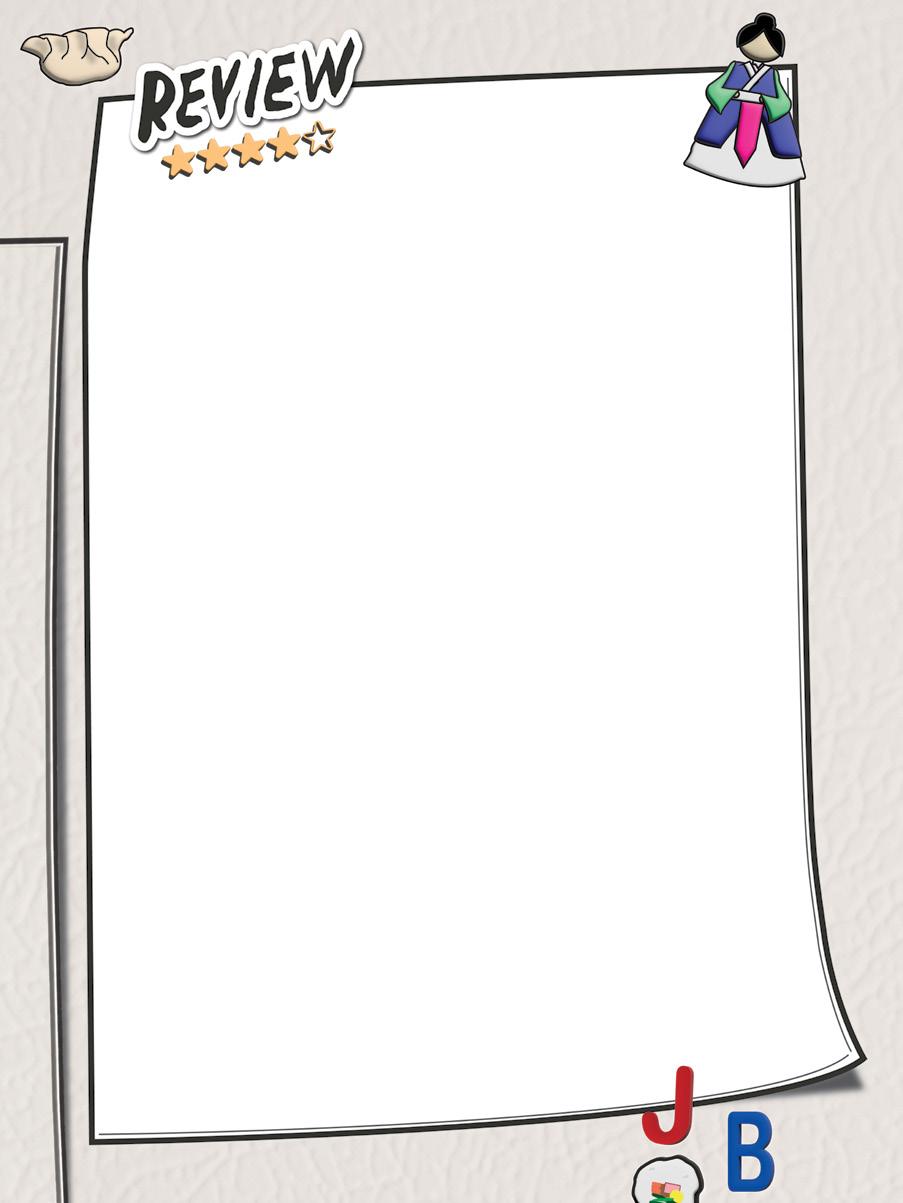
“Instead of meat, I eat veggies and pussy” is the opening line of “Eat Your Salad” by Citi Zeni, Latvia’s entry for the 2022 Eurovision Song Contest. A ridiculous, eyebrow-raising lyric like this is not just expected, but welcomed, at Eurovision. For the uninitiated, Eurovision is essentially music’s answer to the Olympics. Without delving into the complicated rules and indefensible geopolitical controversies of the contest, each member country of the European Broadcasting Union selects a representative to perform a song on their behalf. The winner is selected through a mix of votes from the public and a jury. Eurovision is undeniably popular, but is looked down upon by the music community for its supposed inability to produce neither global superstars nor good music as of late. This assumption, however, is not necessarily true.
Eurovision’s biggest draw is its potential to create the next international megastar. ABBA and Céline Dion found their breakthrough following their Eurovision wins. The absence of recent Eurovision artists achieving crossover appeal makes it seem like the contest has lost its status as a vehicle for commercial success. But conflating commercial success with US and UK markets is problematic and ignores that many Eurovision participants become wildly successful in their home countries — already valid criteria for superstardom.
Eurovision-winning songs, like 2018’s “Toy” and 2019’s “Arcade”, have enjoyed an influx of streams after finding a second life on TikTok. Perhaps those examples are just one-hit wonders enabled by the algorithm, but Eurovision artists can still be successful today. Case in point: Måneskin. The 2021 Eurovision winners are among the most popular bands in the world right now. They have multiple songs (in both English and Italian) surpassing 100 million streams, opened for the Rolling Stones, and were the first Italian musical guests on Saturday Night Live. There is a broader conversation to be had about which international artists are afforded access to certain opportunities — from which Måneskin benefits—but it’s telling that a recent Eurovision winner can replicate the commercial juggernauts of its heyday.
Another common criticism of Eurovision is that it produces low-quality music. Music criticism tends to associate adherence to convention with bad music, particularly in pop. “Bad” music is not celebrated enough as a legitimate, enjoyable, and entertaining artform, assuming the ideas promoted do not cause any harm. Eurovision artists don’t always deserve to be pejoratively labeled because of their association with the contest. Eurovision is fond of rewarding extremes, usually the extremely generic or the extremely ridiculous.
Performers also face a multitude of constraints, such as a three-minute limit, a ban on political messaging, and pressure on nonEnglish-speaking acts to perform in English to win. Competitors must stand out amongst dozens of acts within the week-long contest. No wonder they turn to conventions or gimmicks to attract the attention of the audience or the jury. These constraints–save for the time limit–are becoming less prevalent, evidenced by acts of the 2021 contest. Four of the five highest-placing songs were performed in a language other than English. Artists experimented with more genres beyond the Eurovision banger-ballad binary, with songs incorporating elements of glam rock (Italy’s “Zitte E Buoni”), pop-punk (Finland’s “Dark Side”), electro-folk (Ukraine’s “Shum”), and chanson (France’s “Voilá”). More entries explicitly touched on social issues, such as the aptly titled “Russian Woman.” This is all but certain to continue into 2022. Even “Eat Your Salad,” in all of its novelty, attempts to raise environmental awareness.
Iceland’s Daði Freyr is an example of a Eurovision act worth your time, embracing but elevating the contest’s campiness. By his own admission, Freyr is obsessed with “dissecting the intricate craft of the three-minute pop song.” There’s something new with each new listen of his 2020 entry “Think About Things” — the deliciously funky bass line, the explosion of post-chorus brass fanfare, the cleverly masqueraded lyrics about his newborn daughter. His chance at redemption, 2021’s “10 Years,” is no less of a disappointment. It’s an ode to his wife that manages to be adorable, danceable, self-aware, and meticulously designed to perfection all at once. Freyr’s entire discography is as earworm-y as it is interesting. He is living proof that Eurovision can still find artists with a genuinely bright future in music.

It will be interesting to see if the US adaptation of Eurovision will find artists capable of commercial or critical acclaim, especially when TV singing competitions are unsuccessful in doing so as of late. But with 60+ years in the game, the original Eurovision isn’t going anywhere. Let’s not count it out and enjoy the contest for the entertaining spectacle that it is.
• Orla Levens (Political Science)
Spring 2022
Designer: Nicholas Alonzo ( Architecture )
18
Etcetera
In “Crying in H Mart,” Michelle Zauner Learns to Nourish Body and Soul
Michelle Zauner, the Grammy-nominated lead singer of Japanese Breakfast, wrote a biography that has little to do with her music. Instead, “Crying in H Mart’’ is a 239-page diary revealing Zauner’s pilgrimage to find her Korean roots after losing her mother to pancreatic cancer. It’s a heartbreaking, intimate account in which Zaunder rediscovers her heritage and reflects on a relationship that transcends cultures, ages, and even death.
To many, losing a mother is akin to losing the core of your being–it’s losing the one who bestowed you with life. For years, Zauner and her mother Chongmi misunderstand each other– Zauner is a restless artist intent on leaving behind both her town and her legacy while her mother is a homemaker and caretaker that sought to honor her Korean traditions. In a sense, Zauner is always fleeing from herself, but her mother forces her to look inwards. Chongmi takes pride in her looks, demeanor, customs, and idiosyncrasies. Zauner, on the other hand, is a flighty bird, in pursuit of making something meaningful and marking the world with

To many, Chongmi may seem self-interested or vain, but Zauner illustrates a lovely portrait of her quiet compassion and altogether “loveliness”–the word forever engraved on her headstone. The book is an exquisite portrayal of the beauty of the everyday, the significance in simple mornings and peaceful evenings. Chongmi does not seek some greater unknown, but instead finds magic in the little moments around her, the quiet in-betweens that others would look over. She collects knick-knacks that grant magic to her home, she creates colorful paintings just for her daughter’s eyes to see, and she purchases makeup and QV creams just so she could shine
The little things in life may seem unimportant or uninteresting, but they are what anchor us to the wonder of life. These little things keep our spirit alive–quick conversations with loved ones, simple sayings recalled years later, quirks that children inherit, or the small objects we leave behind. Zauner’s mother honors the fleeting features of her life. She cherishes her identity as a Korean woman. She’s proud of simply living, of being who she is; instead of sowing a field of achievements, she plants a garden for her daughter to one day cultivate, and for her, that is enough.
Zauner’s mother honors her identity through food, a custom passed on to Zauner herself. Food is not simply about nutrition. It’s a cultural experience, something to savor, to explore, to find magic in. Food is used to heal sickness, to celebrate life, to find comfort in the darkest moments. Chongmi is more than a chef. She is
a preacher, a seer, a prophet: she knows that food holds a special divinity. While her mother became ill, Zauner rediscovers this mysticism and reclaims an unknown power through food.
Zauner pays homage to her Korean ancestors, standing united with generations and generations before her, creating the most spectacular dishes: from homecooked jjigae to mandu dumplings. She also begins to understand her mother. In something as simple as food, you feel something far deeper and more significant. In one bowl of jatjuk, you can taste the history of so many Korean dishes made in the exact same way over thousands and thousands and thousands of years. This culminates when Zauner is bequeathed with her mother’s kimchi refrigerator and reflects on how the kimchi process is a strange limbo between something decomposing and thriving, and how something could live on, even after death:
“The memories I had stored, I could not let fester… They were moments to be tended. The culture we shared was active, effervescent in my gut and in my genes, and I had to seize it, foster it so it did not die in me. …The lessons she imparted, the proof of her life lived on in me, in my every move and deed. I was what she left behind. If I could not be with my mother, I would be her,” (223-224).
Throughout the novel, Zauner rarely talks about her music career–save the end chapter, where she can once again croon in her native tongue–yet the whole book feels musical in some way. “Crying in H Mart” is more of a song than a story. It’s not a chronological narration of start to finish–a ballad detailing the way a woman can rediscover herself through her matriarchal line, through her heritage, through her appreciation for cultural customs. It’s an anthem about Korean cuisine, a chorus about a woman’s strength, a funeral hymn about those who leave us too soon. But in many ways, they never leave us at all. Zauner even ponders the strange and magical coincidence of her musical success after her mother’s passing: “if there was a god, it seemed my mother must have had her foot on his neck, demanding good things come my way” (232). At the end of the book, Zauner stumbles upon an old, sad tune that moves her–she soon realizes that it was once her mother’s favorite song. Another indication of how lost loved ones still stay with us is not in grand gestures, but in the little moments: a recreated childhood meal, a hidden pair of shoes, sudden good luck, a long-forgotten melody.

 • Kenneal Patterson (Journalism)
• Kenneal Patterson (Journalism)


 Designer: Sarah Liu (Journalism)
Designer: Sarah Liu (Journalism)
19
Sex and the City is back. Indie sleaze is in. And decidedly, Azealia Banks must return to the 212.

Over the past couple of years the bloodstream of culture and media has returned to New York City whose unrelenting individuals have long set the tone for what an idyllic contemporary life looks like. There were the people of our parent’s generation who longed to prove to their hometown that they had made a respectable life for themselves, grabbing jazz infused old fashions with the Wall Street crowd. They were then pushed to make way for our older siblings who had spent their teen-hood watching The Wolf of Wall Street and The Devil Wears Prada and decided they too possessed the grit to be Jordan Belfort and Andy Sachs. After denouncing “adulting” and picking up overpriced coffee habits in Brooklyn roasteries, the millennials have passed the city, and teenage infatuation for cities everywhere, down to us. But, as the perils of the pandmeic led us to self-reflect on what we wanted out of our refreshed lives mixed with encroaching feelings of economic catastrophe, we’ve all been left broke with expensive tastes.
Harlem born hustler and underappreciated New York hip hop icon Azealia Banks was ahead of her time for a multitude of reasons; one being her intuition for the yearn the current generation would have for breaking out of life’s conventions and working restlessly to afford their wants and passions. In her aptly named 2014 album Broke with Expensive Tastes, Azealia effortlessly captures the euphoric, party pop sound we nostalgically crave, proven by the newfound appreciation for hits like “American Boy,” “We Found Love,” and “Promiscuous.” Yet, Azealia doesn’t speak of the same club-drunk love Kanye, Rihanna, and her 2000s peers do. She badly wants to be the brazen, wealthy party girls she sees in the 212, but
she doesn’t have their privilege. She has to work tirelessly in order to distance herself from her tumultuous home life, she needs to be ruthless to sink her teeth into opportunities others may have handed to them, and she tries to desperately cling onto the brash Barbie persona she has curated for herself.
Broke with Expensive Tastes is, at its core, an extremely profane, electro-hip hop homage to the New York City soundscape and calling it vulnerable may seem comical. However, in tracks like “Soda” and “Chasing Time” we catch her weakened in the process of chasing this elusive life confessing “I tried to hide behind tired eyes, I sigh/I’m tired of trying to try not to cry” and “I want somebody who can take it apart/Stitch me back together make me into who I wanna be.” Delivering such exhausted sentiments amongst colorful, synth production, she brings us into a collective moment of derealization. We’re brought back to the nights we find ourselves in a sweaty club or blurred birthday dinner acting far from the person we know ourselves to be. But, such moments are fleeting and we discard our inhibitions for the night as we continue to party hop with Azealia around New York City.
The album’s opener, “Idle Deliah” samples UK funk DJ Pearson Sound’s song “WAD” which weaves its patterned dubstep with rhythmic merengue instrumentation as a nod to the city’s Dominican population. “Gimme a Chance” and “Desperado” demonstrate Azealia’s admiration for her NYC based female rap influences Lil Kim and Remy Ma as she emulates their medium tempo flows over Broadway-esque showtunes and jazzy riffs. And, even though they’ve taken shots at each other over the years, her rapping in “Heavy Metal and Reflective” and “Ice Princess” are highly reminiscent of NYC’s female rap head honcho: Nicki Minaj. Her lyrical dexterity and
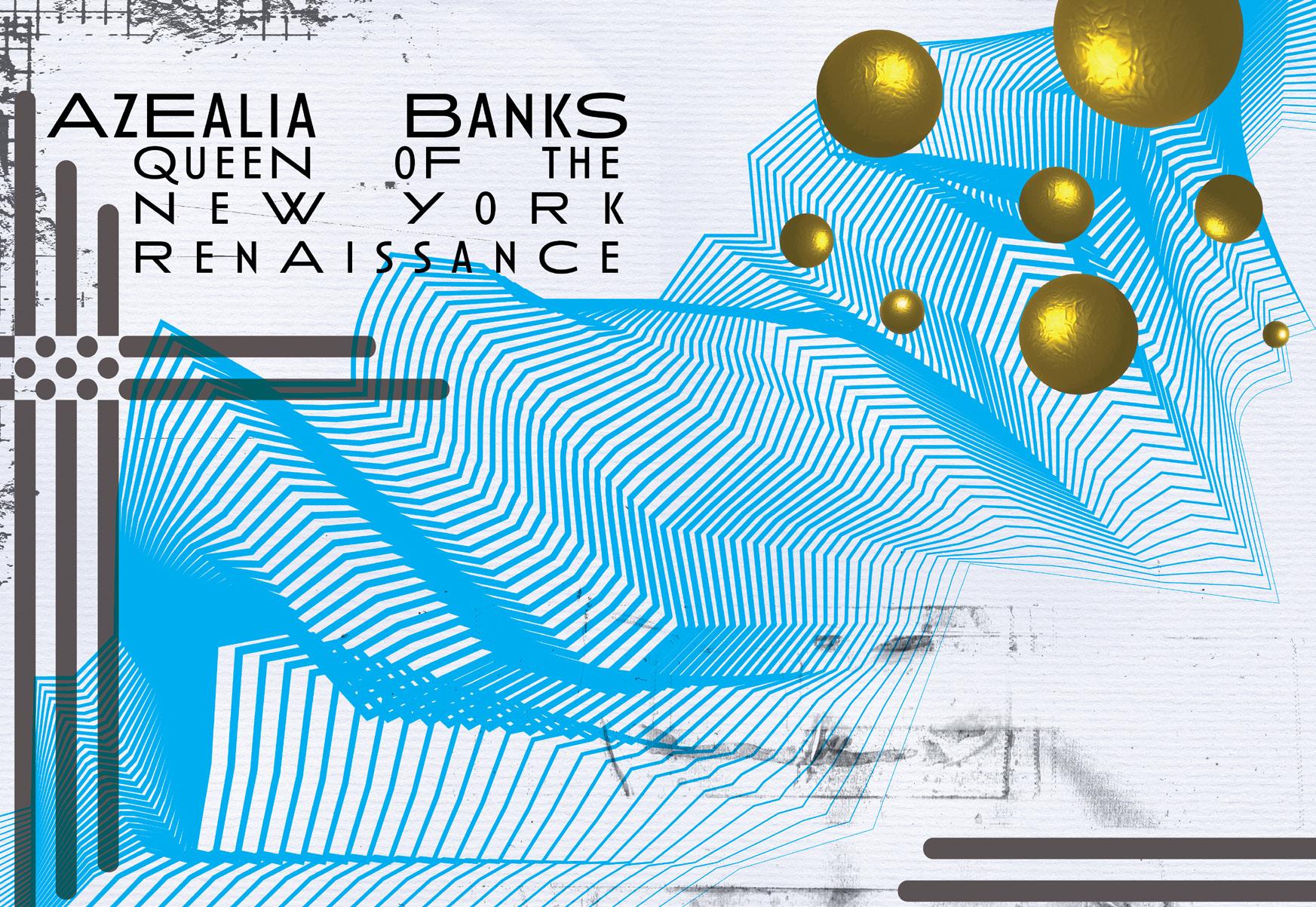
Spring 2022 Feature 20
persisting rap versatility begs the question why she didn’t have a seat in Nicki Minaj and Remy Ma’s battle for the Queen of Rap Title. (She would have my vote.)
“Luxury,” another standout, which found resurgence as a slowed down and reverbed track on Tik Tok, was a missed opportunity for New York Fashion Week’s camp high fashion runways. The song’s infectious beat seems to have a runway strut built into its progression and simply belongs at a Moschino or Miu Miu show. A common trope in female musicians and their artist personas is the periodic reinvention they undergo everytime they release a new body of music. Lana Del Rey, Taylor Swift, Doja Cat, and Billie Eilish can be relied on to entirely abandon their previous looks to signify that they’ve evolved their sound. Azealia has never participated in this cycle and remains a firm fashion outlier. Her expertise in genre-blending applies to her personal style where she mixes high fashion and gaudy streetwear with abandon. As a result, she has been embraced by both schools, closing the Kim Shui 2022 spring fashion show while being deemed a 2010’s hip-hop “it girl.”

Where she began to position herself within the NYC social scene, rap culture, and fashion led her to create the crown jewel of her discography: “212”. Her friend and Canadian musician, Jacques Green, who was featured in the song’s erratic music video said it perfectly when he observed that in those days “everything she did felt like it was immediately iconic.” Whether played at an sleek rooftop bar or grimy basement party, the songs concoction of house, EDM, and hip-hop hits all the same. The opening line “Hey, I can be the answer” serves as the thesis statement of Broke With Expensive Tastes. Willing to do anything, go anywhere, and be anyone for a taste of the life she will sacrifice for, “212” is Azealia’s ballad for
work-hard play-hard insatiables everywhere. It’s later inclusion in Sofia Coppola’s The Bling Ring – a satirical crime film that followed fame obsessed LA teens who robbed the likes of Paris Hilton, Lindsay Lohan, and Rachel Bilson – was a match made in reckless heaven. Although one would hope Azealia’s recklessness stayed within the confines of her music, her inability to be civil on social media (most notably Twitter) and just as equally in real life has tarnished her revolutionary status. She has received tenfold the attention she received from her artistry by engaging in offensive feuds, unnecessary clap backs, and outright indefensible behavior such as digging up and boiling her dead cat. In the era of refusing to separate the art from the artist, it is impossible to support a welcomed return of Azealia Banks.Yet, when looking at her past greatness it leads us to a bigger question. Can we continue to call My Beautiful Dark Twisted Fantasy a timeless masterpiece and ignore Kanye’s irrationality? Can Art Angels be considered a creatively bold statement album if Grimes compromised her morals for a relationship with Elon Musk? Is Norman Fucking Rockwell still deserving of being one of the greatest female albums after Lana’s lifetime of controversial opinions? Because such moments in music are so intertwined with our personal lives and memories, the public is still wrestling with these questions and the broader ethics of appreciating art. However, while we lie in this middle ground, we can acknowledge that Azealia Banks in the time of Broke with Expensive Tastes possessed a vision unlike any other. Her aptitude for making nonsensical sounds that feel undeniably correct and creating a sonic party in which everyone feels welcome should earn some remembrance.
• Ananya Chaudhari (Business and Economics)
21
Designer: Laura Mattingly (Communications and Design)
Widely looked down upon, the jukebox musical movie has long been regarded as lazy and frivolous. These movie musicals are despised both by theater professionals and enthusiasts as well as film junkies, inspiring a uniting force of hatred between many consumers and critics of entertainment media. But the jukebox musical format has, in fact, produced some films that should genuinely be taken seriously for their artistry and for their long-lasting effects on the movie format.

Although movies like Mamma Mia and Moulin Rouge were met with praise from regular consumers, critics and professionals were hard pressed to deliver a positive review because of the innate stigma against the jukebox musical movie. But just because something isn’t entirely original does not mean that originality cannot come out of it. Jukebox musical movies use popular songs that will inherently draw a large crowd, and they combine those with a creative story to link each song together. There needs to be some amount of flair and mastery in order to accomplish building the story out successfully and skillfully.
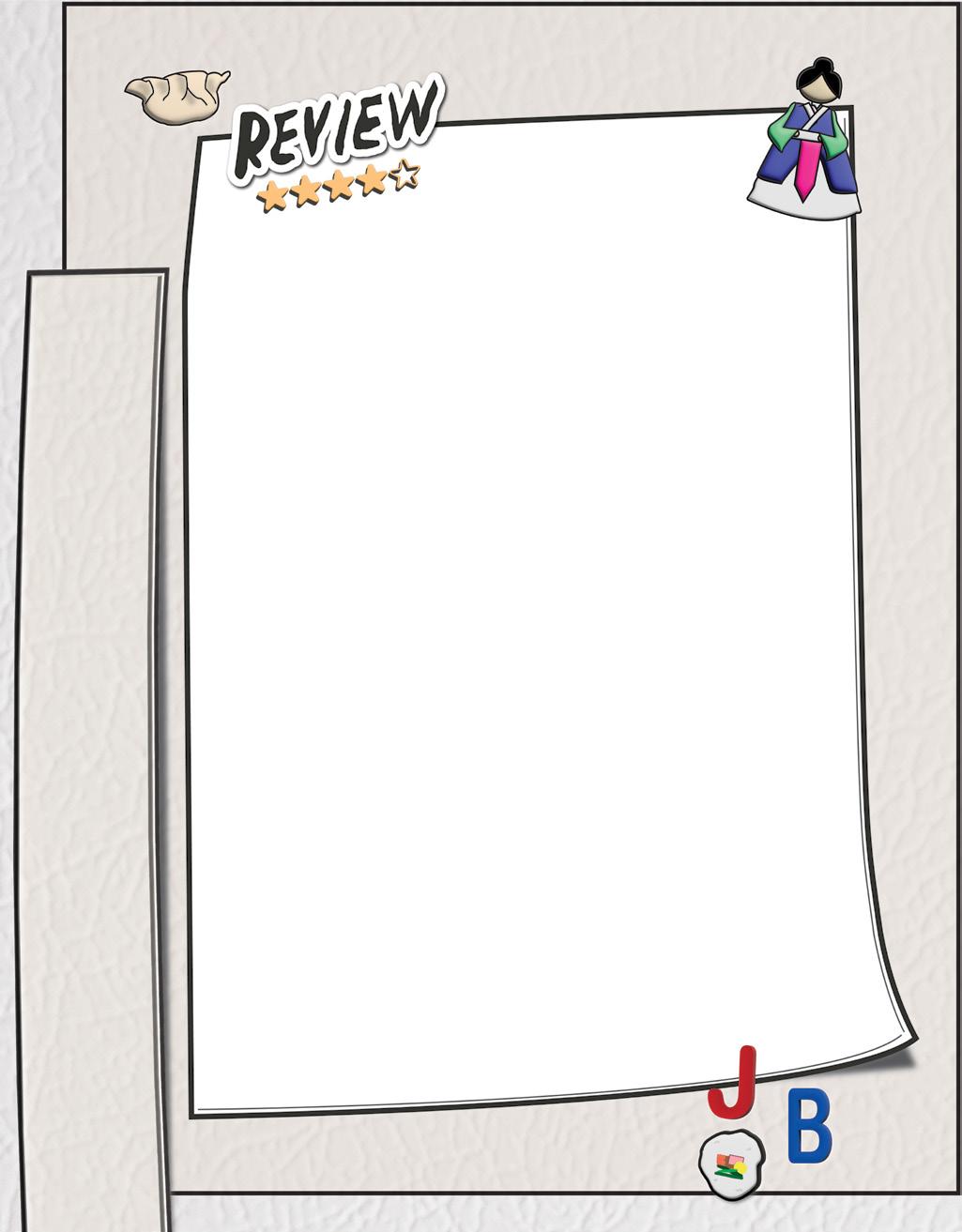
Moreover, the cleverness used to create films like these gives new meaning to an artist’s discography or album, and births a new story in place of the original that each song tells. Art is meant to be interpreted in multiple ways, and jukebox musical movies are just one way of reinterpreting classic, well-loved music in a new medium.



My favorite movie of all time is Across the Universe — a fact often met with confusion or a cringing sigh. But to me, it is a movie that I could watch a hundred times and still discover new things with every viewing. It’s laced with a beautifully imaginative storyline built around the music of The Beatles. Set during the Vietnam War, it provides a whole new context to The Beatles’ discography, creating a wild plot about the pitfalls of war, the devastation of heartbreak, and many creatively portrayed drug-induced trips.
There is a scene in Across the Universe where the characters lay in a field singing “Because” by The Beatles. This is truly the most exquisite use of song in the movie, bringing in a criminally underrated Beatles song for an incredibly delicate and entracing pause between the characters’ regular lives and the ways that those lives are then disrupted by the social revolution of college-age adults because of the Vietnam War.
Across the Universe runs deep with symbolism and miniscule details that can only be picked up on a second or third watch, and yet, many people refuse to take it seriously because of the fact that it bears the label of a jukebox musical movie. It is unfortunate that they might miss out on the genius of this movie because of an inherent disdain for movies that use popular songs in this way.
Moreover, the film Mamma Mia has captivated audiences for years since it came out, even garnering enough love to grant it a sequel with Mamma Mia: Here We Go Again. But again, despite its extreme popularity, critics reject praising it and media consumers refuse to admit how much they like it because it is regarded as silly. The general consensus seems to be that it doesn’t count as a real film, as it couldn’t possibly be meaningful or significant because of its use of ABBA songs. But it’s not a foolish movie — it might not be the most serious film of all time, but movies don’t have to be serious to be meaningful. Mamma Mia is supposed to be amusing and lively, the same way that ABBA’s music makes listeners feel. The film creates an exciting viewing experience where not only does the audience get to watch the inventive storyline play out as a new spin on a romantic comedy, it also allows for an entirely interactive watchthrough where classic ABBA songs blast through the screen.
It’s not all silly — the scene involving “My Love, My Life” generates a much deeper layer of emotion than dialogue could have. It is a moment between a mother and her child that connects with the audience specifically because of the usage of the touching ABBA song. And who can forget the iconic scene where Donna stands atop a cliffside, belting out the lyrics to “The Winner Takes It All?” Almost nothing could have been more dramatic than the release of emotion that was communicated through Meryl Streep’s glorious rendition of the song.
Moulin Rouge is another classic jukebox musical movie that still captivates audiences today — and yet is supposed to be more of a “guilty pleasure” movie because of its use of popular music. The movie doesn’t draw from just one artist, it is a combination of a wide variety of music that forms a wildly exciting roller coaster ride of a movie. From David Bowie to Chistina Aguilera to Elton John, Moulin Rouge provides new meaning for beloved songs that accompany the classic chaos of a Baz Luhrmann movie.
The music of Moulin Rouge helps to intensify the emotions of the movie and consistently aligns with the physical pacing and tempo, speeding up along with the turbulent quick cut shots and slowing down for the more meaningful and profound scenes between lovers and friends. The soundtrack allows for more show stopping moments, more connection to the plot and its characters, and a much more dramatic and stimulating viewer experience.
Nothing quite compares to the Moulin Rouge rendition of “Roxanne,” originally by The Police. “El Tango de Roxanne” takes the classic song and turns it into a musical masterpiece within the context of the movie — Christian, the male lead, is in love with a courtesan. The extremely dramatic take on the song builds it a new life with more flair, more sex appeal, and infinitely more rasp in the vocals. Set to a visually magnificent tango dance number, Moulin Rouge’s usage of “Roxanne” puts the film that much farther over the top.
Jukebox musical movies, always looked down upon with contempt and ridicule, deserve significantly more credit than they have been given. If film lovers, music enthusiasts, and theater fanatics were able to avail themselves of the elitist culture that brands these movies as unwatchable, they would be able to understand that the usage of popular music in this way can produce something of great value.
• Lily Elwood (Journalism)
(
) Spring 2022
Designer: Catherine Terkildsen
Behavioral Neuroscience
22
Etcetera


 Summer Salt, Summerville Theater
Photo by Ashlynn Braisted (Computer Science and Design)
Cautious Clay, Royale
Photo by Helen Cai (Health Science and Business)
Summer Salt, Summerville Theater
Photo by Ashlynn Braisted (Computer Science and Design)
Cautious Clay, Royale
Photo by Helen Cai (Health Science and Business)
AN INTERVIEW WITH

Charlie Hickey is a 21-year-old indie artist based in Pasadena, California, best known for his EP Count the Stairs. His distinctly introspective voice and slow, forceful alternative folk rock quality effortlessly tugs at listeners’ heartstrings. Hickey recently sat down with Tastemakers to talk about his new label, touring, and his upcoming album to be released later this year, Nervous at Night.
This interview has been edited for brevity and clarity.
Tastemakers Magazine (TMM): How would you describe your music in a few words?
Charlie Hickey (CH): I feel like I answered this question recently, I’m trying to remember what I said. I think I said pensive, atmospheric and hopeful.
TMM: Who are some of the artists that inspire you and your music?
CH: Well, my first love was kind of more like traditional singer-songwriters like Elliott Smith and Conor Oberst. I’m really inspired by lots of bands like The National and Pinegrove in terms of more recent times. And then I also like a lot of pop music like MUNA and The 1975 and stuff that is a little less rootsy.
TMM: Drawing from some of the artists you talked about to begin with. I notice in your album there’s a lot of descriptions of the Los Angeles sites such as Lacy Park, and I was wondering how growing up in L.A. has influenced your music?
CH: I mean, I guess L.A. just has such a thriving music community, and I think growing up with music and then being in close proximity to it. Just having it feel tangible by going to Largo or a venue like that and being like, ‘Oh yeah, Elliott Smith used to play here all the time’ or ‘Fiona Apple might be a guest at this show.’ There’s a lot of that which I feel like you can’t really get anywhere else. So in that way, it’s made music feel like more of a real, tangible thing that you could do and be part of. But also, wherever you are is going to color your music and make its way and your writing in ways I probably don’t even know.
TMM: I understand that you signed on to Phoebe Bridgers new record label, another L.A. based artist. I was wondering what changes that shift has brought to your music career process or your production, if any?
CH: In terms of the actual artistic process, nothing, really. I would say I’m always just sort of doing what I want to do and luckily, Phoebe and the whole sort of ethos of that label are very much about giving artists the resources to do what they want to do. No one’s trying to change anything that we’re doing; I would say it’s uniquely not changed. If that makes sense. But it’s changed in the way that I feel like I have a lot more of a platform now and an opportunity for a lot more people to hear what I’m doing.
TMM: I also understand that you have been touring for the first time. What has that been like and what has it been like meeting and interacting with your fanbase in person?
CH: It’s been really, really cool and fun. The idea of playing in a different city and there being one person in the audience that knows the words to one of your songs or something is just like a totally new thing for me that I’m still sort of trying to wrap my head around. I think I really like touring, it’s like summer camp but more productive. You have the opportunity to get really close to people that maybe you wouldn’t otherwise.
TMM: I also noticed that you have a lot of collaborative songs in your discography — is there something in particular that you like about collaborating with other artists?
CH: I don’t like feeling isolated and solitary a lot of the time, I like to involve other people in the process, even if it’s just showing them something or bouncing off ideas or going as far as to completely co-write a song together. I do really appreciate having a musical community
Spring 2022 Interview 24
CHARLIE HICKEY
and it can be more fun to involve other people and to make it another opportunity for connection as opposed to an opportunity to go further inside of yourself, which is sometimes what is needed to write. Sometimes you need someone to get you out of yourself and say, ‘don’t say that,’ or ‘do say that.’ And even if it’s just another person’s proximity or presence, even if they’re not necessarily collaborating with you on an equal level, it can change the whole thing.
TMM: And who has been your favorite artist that you’ve collaborated with so far and why?
CH: Well, I collaborate with my friend Marshall Vore, and I love collaborating with him because it’s sort of what I was talking about – some of my songs are songs that we’ve written together, totally 50-50, but in general, I like to just bring him a song. I always find that his energy is helpful to me, whether it’s him being a writer or from him being an editor, he’s just a smart guy. And sometimes people will have insights that I could not have myself: like the collaboration with MUNA that I did was really, really cool. They did a pop reworking of one of my songs, which was really amazing to hear because I’m such a fan. It was just wild to hear how they heard the song and how they would imagine it.
TMM: Focusing on your EP, Count the Stairs, can you talk a little bit about it and what inspired it and kind of what making it was like?
CH: With Count the Stairs, we didn’t really know what we were doing when we started making those songs. We didn’t know if we were making an album, we were making an EP or if we were just making a bunch of songs that would never come out. A lot of them were already done and already pretty much done being recorded. But then there was a time when we had decided that we were going to put out an EP and we sort of went back and chose six of the songs that we had been working on and got them in shape to be released. So for whatever reason, we
chose those six songs to be a group and then these 11 songs to be another group.
TMM: Was there any particular reasoning on your part or just what kind of felt right?

CH: I think it just felt like what feels right in terms of cohesion and sonic and story-wise. I think the EP, the root of all the songs are very similar. The LP production is a lot more dense and we went a lot of different places that we didn’t go on the EP and it’s a bit more of a roller coaster.
TMM: Listening to your upcoming album, Nervous at Night, it’s very introspective and reflective and very vulnerable. I was just wondering what it was like crafting that album?

CH: That album sort of started being written three years ago, some of some of the songs are as old as that, and some of them were written right before the album, but it’s kind of like an accumulation of basically everything I’ve done these past three years. We started demoing some of those songs three years ago and some of the recordings stayed pretty much the same or just glorified versions of those demos. And then some of them, we started completely from scratch. But it does feel like this has been what I’ve been working towards for the whole time I’ve been making music.
• Sophia Haydon-Khan (Undeclared)
25
Designer: Jenny Chen (Business and Design)


Cover Story 26 Spring 2022
Nine Inch Nails is perhaps one of the most controversial-yetfamous musical projects of the last quarter-century or so, beginning in 1989 with the release of Pretty Hate Machine. Since then, Trent Reznor–the mind behind the endeavor–has released consistently terrifying-yet-masterful projects under the moniker. The anguish and raw energy at the forefront of Reznor’s vocal delivery legitimizes motifs of anger at the world, power struggles, addiction, violence, sex, and death. The instrumentals of songs are just as intense, as Reznor largely pioneered the idea of using music production technology as an instrument, first with Pro Tools and then Ableton. This skill, combined with his multi-instrumentalist talents, led to a complete synthesis of analog and digital music in real time. As early as Pretty Hate Machine songs were massively layered and instrumentally complex, allowing virtually disparate noise to combine into powerful compositions. In short, Trent Reznor and various temporary contributing musicians to the project captured the sound of the 90s alt scene–uncertain, violent, gritty, and brutally nihilistic.

As Reznor’s popularity and sphere of influence grew, everyone began to take notice of how experimental and relentlessly modern his music was. However, his world truly expanded when he began to work with filmmakers. First working with Oliver Stone to produce the soundtrack for Natural Born Killers in 1994, he subsequently produced soundtracks for David Lynch and Shinya Tsukamoto.
However, his true ‘breakout’ role with film soundtracks was on David Fincher’s 2010 drama The Social Network. Reznor worked with Atticus Ross, now promoted from a frequent collaborator to the only other permanent member of the Nine Inch Nails project, to compose the entire score of the movie. The result was a resounding success, essentially constituting a masterclass in technology-centered drama soundtracks. However, unlike previous songs created exclusively for films such as “Burn” for Natural Born Killers, the Nine Inch Nails moniker was abandoned in favor of simply Trent Reznor and Atticus Ross. This transition officiated a complete split between the two projects, and sparked over a decade of film compositions which blend in and out of the adjacent Nine Inch Nails discography. While there are always reasons–some more legitimate than others–for artists to split their oeuvre into different projects, Trent Reznor and Atticus Ross had a very good reason to split theirs: Their film scoring is simply just very sonically different from their Nine Inch Nails work. Where Nine Inch Nails constantly demands the spotlight, their scores are pleasantly nuanced and subtle, very rarely negatively pulling from the acting. Instead, their scores seek to underline character actions and emotions in the perfect lineweight. This ethos was present from their first project, whisking a young Mark Zuckerberg–played by Jesse Eisenberg–through the trials, tribulations, and growing pains of a young Facebook. The score is

27
Designer: Alia Ziae-Mohseni (Computer Science and Design)
beautifully ambiguous, just as the intentions of the film are, ultimately leaving listeners to decide whether Reznor and Ross created the soundtrack of a troubled genius navigating a new world of success or a burgeoning supervillain backstabbing his way through the first steps of world domination. Fincher clearly liked the duo’s work, and has worked with them twice since then on The Girl with the Dragon Tattoo and Mank. Both scores enhance their respective films significantly, although the score for The Girl with the Dragon Tattoo is strikingly similar to sonic themes found within Nine Inch Nails projects than in other film work. However, the work found under Trent Reznor and Atticus Ross is generally so much more stripped back than anything you could find on a Nine Inch Nails release.
With such vastly different intentions for the two projects, it comes as little surprise that Reznor and Ross would want to split their work. However, the widespread success that both projects have garnered–and the audiences they cater to–are rather shocking when put into the context of early Nine Inch Nails. When asked to give a defining example of Nine Inch Nails most people over 25 might refer to a song off The Fragile or one of their heavily censored MTV music videos, infamous for their graphic depictions of nudity and sex. However, if you happened to run into a particularly well read and movie obsessed 10 year old a good example of Trent Reznor and Atticus Ross’ work, they might refer you to “The Great Beyond” or “Earthbound,” found on the Soul soundtrack, a Pixar movie released in 2021. While both defining examples share strong baseline ties in sonic palettes and methods of instrumentation, one is absolutely not appropriate for child film buffs. This example sets the stage for the other reason Reznor and Ross would want to disassociate their film work so directly from Nine Inch Nails: some people have such a viscerally negative reaction to even hearing about the band
that keeping the name could cause problems for filmmakers and funding before the cameras even start rolling. While neither Reznor nor Ross seem to be the type of people to bow to the court of public appeal, their soundtracks aren’t trying to make the same significant statements and provide insights to the human condition that a Nine Inch Nails record does. Their dual success therefore lies in knowing when to work quietly or speak up, and has worked exceptionally well. Nine Inch Nails has won Grammy awards and been inducted into the Rock and Roll Hall of Fame, while the separate project Trent Reznor and Atticus Ross have won two Academy Awards for best original score. This success seems to work together, as Reznor happily announced in an interview after winning an Academy Award for Soul that he planned to start work on a new Nine Inch Nails project imminently.
The interplay between the two projects is visible from tracks off any of their scores, especially those covering intense or stressful moments in a film. The Nine Inch Nails core structure even shines through in Soul, where the track “Terry Time” is ripe with plucky synths and scattered background static which seems like a throwback to the bridge on “Closer” from The Downward Spiral. Such a breadth of musical influences is rarely achieved, especially when considered across two entirely different disciplines of the field. However, Reznor navigates these unknown waters with ease, taking on challenges as they come at him and inevitably conquering them. It seems that neither the Nine Inch Nails project nor the film scores show signs of ending, so we can expect many more additions to Trent Reznor and Atticus Ross’ heavily varied discography for years to come.
• Terrance Dumoulin (Civil Engineering and Architectural Studies)

Cover Story 28 Spring 2022

 Snail Mail, Royale
Photo by Emily Kobren (Design)
Snail Mail, Royale
Photo by Emily Kobren (Design)
DISCOGRAPHY





Despite only releasing five studio albums in her 26 year career, Fiona Apple has undergone a massive metamorphosis. Born Fiona McAfee Maggart, she came into the industry as the seductive itgirl of the late 90s with jazzy piano-based pop songs and a low, velvety voice. However, after the success of her first album, she shunned fame, publicly going after the industry and slowly slipping into a state of reclusion. Her music would undergo a stark change as well, breaking
away from grand jazz and funk sounds and leaning into more experimental, stripped-back ballads. For those reasons, unpacking both Apple’s discography and the context surrounding her music is fascinating. This article will not only provide an overview of her albums, but say what makes each one so unique to her, and hopefully provide you a starting point if you’re new to her music.

Spring 2022 Etcetera 30
Tidal very quickly established Fiona Apple to a mainstream audience: an 18-year-old singer/songwriter with a flare for penning forlorn love songs. This archetype for a popstar has been commonplace since the dawn of the music industry, but she set herself apart with her very mature songwriting. Apple’s songs were immensely dark and poetic for a teenager and audiences took to this instantly. Her provocative hit single “Criminal” rocketed up the charts and eventually won a Grammy. Off the success of that single, Tidal sold over 3 million copies, and Apple was elevated to stardom.
She was not living her best life, though. Apple left her home in Maryland for Los Angeles at 16, fleeing a world where she was bullied and ridiculed daily at school. She was also sexually assaulted at 12, leaving her with many mental scars including a very intense eating disorder. At a very young age, she had already been through so much trauma, and although this wasn’t clear to mainstream audiences, this was what was driving much of her early work.
Her dark past fuels the anger on opener “Sleep To Dream” and “Shadowboxer,” as well as the longing on “Sullen Girl” and “Slow Like Honey.” Still, Tidal more than any other album in her discography features a real sense of vulnerability throughout most of the songs, really wanting this lover to treat her better and take her back. The arrangements from producer Andrew Slater also are varied and provide a wonderfully moody backdrop for Apple’s lyrics. There’s the slow, piano-driven “The Child Is Gone,” the (very unique for Apple’s catalog) latin-inspired “The First Taste,” and the multi-faceted grand finale “Carrion.”
When weighed against the rest of her discography, Tidal still holds up incredibly well. Though Apple said herself she doesn’t connect with these songs anymore–which would lead to a massive sonic shift in 2012–they represent a landmark pop culture moment and would sprout a fascinating career.
While accepting an MTV award for the “Sleep to Dream” music video, Apple went off script, famously declaring that “this world is bullshit” and that listeners should follow their hearts instead of modeling your life after what other people think is cool. Despite how non-controversial these statements seem, she was lambasted by the media and the general public, presumably because she was a young woman pushing back against the industry. The rage from the outside did not tear her down, though; it just helped fuel a delightfully bitter follow-up.



When The Pawn… is Apple’s second studio album, the title being an abbreviation for a 92 word poem Apple wrote. The poem is about how when a pawn thinks like a king, nothing can stop him. It’s clear to see how that poem connects to Apple on this album, as her artistic ambitions display utmost confidence in her abilities as a musician.
The album thematically is very similar to its predecessor, but Apple, while still longing for company, sounds like a woman scorned by past relationships and less willing to make herself vulnerable to her partner. She seems to embody the mindset of her mind being her might, as the last words of the poem state, exuding self-confidence



on almost every track, a slight deviation from Tidal. “Get Gone,” and “Limp,” for instance, see Apple ready to tear the head off of the man who wronged her. Still, she occasionally oscillates back to a lovesick state, wanting that hunger, like the refrain on the album’s biggest song, “Paper Bag,” says.
The sound of the album is also noticeably more aggressive. Aside from “Love Ridden” and “I Know,” which resemble the slower piano ballads on Tidal, each song features a mid to fast paced tempo, groovy drums, and jagged horn shots peppering the mix. Legendary producer Jon Brion gave Apple some wonderfully full arrangements to work with. From the opening track “On The Bound” with its swirling cabaret woodwind sections and pummeling piano to the smooth piano and funky guitars on “A Mistake” there are a lot of diverse instrumentals for Apple to croon on top of.
Though When The Pawn… didn’t reach the same commercial heights Tidal did, this is arguably her most consistent work and a great place to start if you’re new to Fiona Apple.

1997 1999
31
Designer: Syd Tomasello (Graphic Design)
In the six years between projects, Apple, even throughout a high profile relationship with director Paul Thomas Anderson, became a recluse. After studio sessions for her third album, Extraordinary Machine, were mutually deemed unfruitful by both her and Jon Brion, Apple believed she was done making music and that no one would care if she just disappeared.
However, Apple’s fans were rabid for new music. These studio sessions were leaked, and although they were completely unmastered, fans and critics took to the potential that these radio-unfriendly arrangements had. Apple, with rejuvenated support from her fanbase and label, re-recorded the album with a new producer and put the project out in 2005. The sound mostly differed from the leaks, with a much tamer, squeaky-clean studio sound, and it led to lukewarm reception. Still, a lot of great material turns up on the project.
Extraordinary Machine is a continuation of everything Apple was doing on When The Pawn…. Yet again, all of the songs center around love, but there’s additionally a strong theme of self-love coursing through much of the album, most notably on the cabaret-inspired title
track and the jaunty “Better Version of Me.” This doesn’t stop the wellestablished themes of Apple’s music from creeping through, whether she’s trying to reason with her lover on “O’ Sailor” or coming for his throat on “Get Him Back.”

Despite how smoothed out the record sounds compared to its leaked earlier version, there is still a notable amount of experimentation. “Not About Love” has many rhythm and meter switchups, and the robotic claps and strange synth chirps on “Tymps (The Sick In The Head Song)” also created a completely new style for Apple to sing over. Still though, the gussied up production does lead to the record overall lacking the raw, biting element defining Apple’s music up until this point. Only the raucous “Get Him Back,” with the incredibly primal drumming courtesy of Questlove, really provides the bitter soundtrack that suits much of what Apple typically sings about.
Still, Extraordinary Machine, though spotty, features some strong material, and serves as a transitional moment that would lead Fiona Apple into her more adventurous later releases.

Yes, that is the title. It’s also the first indication that Fiona Apple at this point in her career was much freer artistically. Apple was no longer the same marketable young girl for labels to squeeze money out of. She was 34 years old and hadn’t released new music in 7 years. Unfettered by expectations, she began experimenting with sparser, darker songs for fans.
Gone are the lavish arrangements and in come simple songs featuring often just a piano, bass, Apple’s voice, and percussion composed of items ranging from glass bottles to pillows. The lullabyesque bells and piano of “Every Single Night” are startlingly intimate when weighed against her past work, and set the tone of every track to follow. Whether instrumentals are tense like on “Daredevil” and “Hot Knife,” or meditative like on “Valentine,” a lot is consistently done with a little.
With a change in instrumentation comes a change in Apple’s lyrics as well. As she mentioned in an interview, she was beyond writing love lyrics which solely direct blame toward her former partners; it was time for her to accept responsibility too. These themes turn up on practically



every song, namely “Werewolf” and “Left Alone,” and while they create a more subdued listening experience, they display her remarkable growth as an individual. There are still moments where she casts blame, but those moments sound different as well. Older songs in her catalog such as “Shadowboxer” and “Paper Bag” were instantly catchy, but on The Idler Wheel…, a song like “Regret” throws any commercial-friendly traits out the window in favor of Apple straining her voice monstrously to scream at her partner for his mistreatment. Following this are the album’s two sweetest tracks, the guileless “Anything We Want” and thumping “Hot Knife,” representing perhaps a sense of emotional freedom after her long journey of self reflection, or maybe her return to her previous state.
The Idler Wheel…, more than an experimental oddity, is a complete shedding of what’s expected from a Fiona Apple project. Although it’s likely her most inaccessible work, this is still a great place to first get hooked on her music.
2005 2012 Spring 2022
32
Etcetera
The second that Fiona Apple first heard the phrase “fetch the bolt cutters,” a throwaway line in a television show she was watching, she knew immediately that was going to be the title of her next album. That line to Apple signifies freeing oneself from whatever they’re trapped in and striking back with force, reclaiming pride and joy. Those four words perfectly encapsulate the unhinged material on her fifth studio album.
Apple employs the same style for making instrumentals as she did on her previous record, filling out the sound even more with a chaotic percussion section. The array of hand claps, tom drums, and metallic clangs (which may represent chains snapping) that make up “Relay,” “Heavy Balloon,” and “Fetch The Bolt Cutters” define those tracks. The overall instrumental tone shifted massively between records as well. The basic elements from The Idler Wheel are the same, but everything is played forcefully and wildly, most notably the piano on tracks like “Shameika.”


The album truly stands out in Apple’s catalog for its subject matter: feminism. Empowering women and fighting back against men
is far from new for Fiona Apple, but this is the only album of hers that focuses almost entirely outward, acting as a rally cry for the #MeToo movement. Though many of these songs are rooted in Apple’s personal life–and call back to specific moments in her life including when she was raped at 12–many tracks have an anthemic, universal quality to them. “Under The Table,” “Newspaper,” and “Ladies” are just a few examples of songs that serve the message at large about standing up to monsters in positions of power. No song on the project is as lyrically impactful as “For Her,” however. Few lyrics in her discography hit as hard as “Good morning/You raped me in the same bed that your daughter was born in.”
Fetch The Bolt Cutters is Apple at her most unbashful and empowered. At 42 years old, she finally has the societal vindication to say what she wants. In an industry that has tried its hardest to put Apple down for almost her whole life, she has withstood it all, and may have finally broken free.
 • Henry Bova (Journalism)
• Henry Bova (Journalism)



2020 33
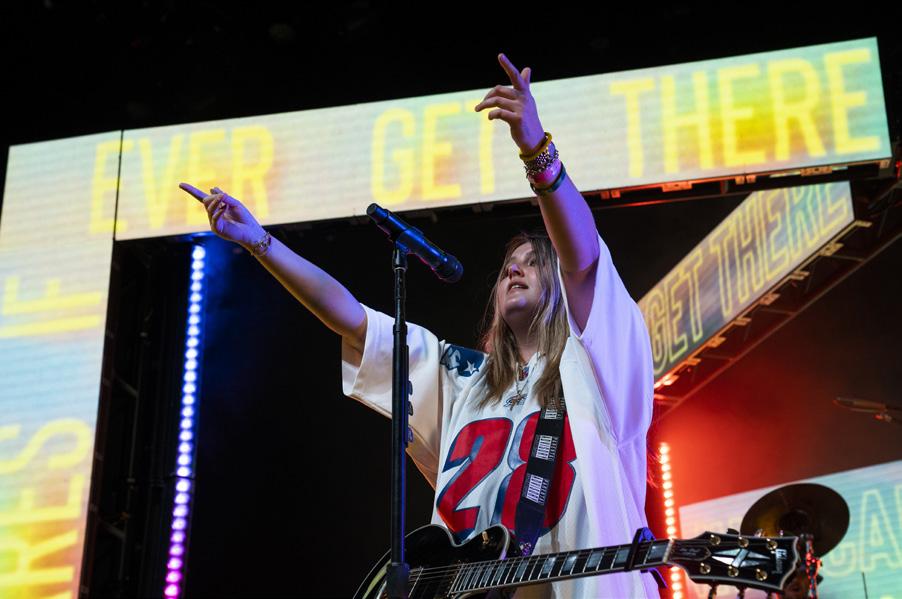
 Chelsea Cutler, Roadrunner
Photo by Coby Sugars (International Business)
Jojo, Roadrunner
Photo by Faith Nguyen (Architecture)
Chelsea Cutler, Roadrunner
Photo by Coby Sugars (International Business)
Jojo, Roadrunner
Photo by Faith Nguyen (Architecture)

 Eph See, The Rockwell
Photo by Mukki Gill (Mechanical Engineering and History)
Eph See, The Rockwell
Photo by Mukki Gill (Mechanical Engineering and History)
When 17 year-old Disney star Olivia Rodrigo released her single “driver’s license” in early 2021, it was all every music critic, music listener, and their moms could talk about. This was for good reason; seemingly out of nowhere, Rodrigo had released one of the most popular songs in American history. It gained the acclaim of having the most single-day streams of any non-holiday song and held the number one position on the Billboard charts for eight weeks straight.
Following the massive success of this single, Rodrigo released her debut album SOUR , which was met with similar amounts of attention as “driver’s license,” cementing Rodrigo as more than just a onehit-wonder. Like all new pop stars before her, especially female ones, Rodrigo quickly experienced a lot of critique. It seemed like everyone in the world had a take on
her, ranging from claims of plagiarism, to general dislike of her music, to criticisms that seemed to boil down more to a dislike of her as a person rather than a musician.
One of the biggest critiques against Olivia Rodrigo is the claim that she is an industry plant. Like many terms that have been popularized on the internet, the term industry plant has been used to death to the point where its original meaning seems to have been a bit lost somewhere in all the accusations it has been used in. The term industry plant usually refers to musicians with previous connections to the music industry who despite these connections have had their rise to fame framed as completely organic and due solely to their talent.

In some ways this critique rings true; Rodrigo had connections to Disney and Interscope, a large record label owned by the even larger Universal Music Group, before even releasing her debut single. She is by no means an indie artist. After the success of “driver’s license,” the money her record label had to continue to push her as an artist is an amount that the vast majority of musicians will never have access to. In a lot of other ways though, this industry plant critique falls flat. For starters, calling an artist an industry plant isn’t a strong critique. A large number of current popular music artists got their starts in incredibly similar ways to Rodrigo. Taylor Swift, Paramore, Lana Del Rey and many others had their starts framed as being from a more indie background than was reality.
It’s understandable that many find it unfair that certain artists are able to achieve massive amounts of success not due solely to their talent but the previously established connections they have with the music industry. It’s important to recognize that

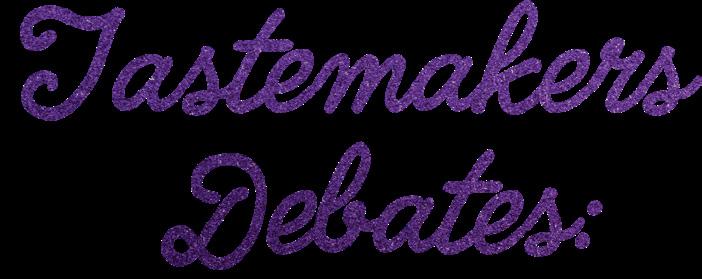


the current structure of the music industry prevents hundreds of thousands of incredibly talented artists from being able to make music on a large scale due to the lack of profit that it will bring to their lives. It’s equally important though to recognize Rodrigo, as well as the dozens of other artists who have been accused of being “industry plants,” have little to no control over this system. Blaming the flaws of the music industry on them is unfair. There is a tendency for some to conflate their dislike of the context that allowed Rodrigo to become famous to the quality of her music.
And on its own merits, Olivia Rodrigo’s music is really enjoyable, and was clearly made by a talented musician. While it’s a bit hard to judge her fully as an artist yet because she only has one project out (the previously mentioned SOUR), the quality of this album seems to be the start of a great career in music. SOUR has a diverse mix of bombastic singles and slower ballady deep cuts, all of which paint Rodrigo as a musician who is able to fit a strong number of styles quite well. The highlights of the album come from the higher-energy singles, the strongest of which are “brutal,” “deja vu,” and “driver’s license.”
“driver’s license,” despite how big it was when it was first released, has been a bit lost in the hype around the rest of Rodrigo’s singles and the release of SOUR. Looking back at the song, it is clear why it was the one that caused her to blow up. While it’s relatively simple compared to many of her other singles, being largely a piano ballad, the raw heartbreak expressed in the song both through the lyrics and Olivia Rodrigo’s voice perfectly allows the listener to feel all the pain she is feeling about this breakup. The

Spring 2022
36
Etcetera
Olivia
Rodrigo

song also builds wonderfully, with Rodrigo’s voice becoming increasingly more frustrated and disheartened and the mix folding more instruments into the instrumental until it reaches its highest point in the renowned bridge of the song.



The bridge works so well in this song because it serves not just the typical function of a bridge, to break up the verse-chorus structure of a song, but also as this deeply confessional moment. The chorus of “driver’s license” is pretty cynical and a bit angry, as shown by its most emphasized line: “Guess you didn’t mean what you wrote in that song about me/’Cause you said forever now I drive alone past your street.” The bridge almost seems to be in conversation with the chorus, responding to its anger by showing the deeper hurt that the anger is being used to hide, with lines like “‘Cause I still fuckin’ love you, babe.”
However, the quality of Rodrigo’s more recent singles makes the fact that “driver’s license” disappeared into the background a bit more understandable. No single is a clearer example of why than the song “deja vu.” “deja vu” is by far Rodrigo’s best and most dynamic song. The song starts slowly, with Rodrigo reflecting on cute little moments in her relationship, with a music box sounding piano playing in the background. But, as the true focus of the song comes out, her frustration at seeing her ex do the things they used to do together with his current partner, the intensity of the song wildly picks up. After the first chorus, the song shifts from being another one of the piano ballads on /SOUR/ to a pop-rock song with an addictive distorted guitar riff, a unique drum beat, and many clever overlapping vocals. Yet “deja vu”’s quality isn’t just due to the exceptional music
and lyrics, but has large parts to do with the fact that it’s also a really smart song. Details like having the vocals overlap when Rodrigo sings “you’re singing it together,” or when after saying “Now I bet you even tell her/How you love her/In between the chorus and the verse” the listener can hear a whispered “I love you” between Rodrigo’s own chorus and verse, make the song even more enjoyable to come back to. This happens because it challenges the listener to look more in-depth at the song, something that most pop songs don’t regularly do.

Meanwhile, “brutal” is the intro to SOUR, and is a rant about teen insecurity put to music. It’s admittedly simple, but the deeply engaging guitar riff and Rodrigo’s stream of consciousness lyrics describing all her insecurities makes the song an incredibly cathartic banger. The song is also an exemplification of another big critique that Rodrigo regularly gets, that her music is immature. This critique is another one that proves to be very hollow for the simple fact that when Rodrigo released this song she was 18, an age that I am sure most college students reading this know is not one highlighted by its maturity.
In many ways, this critique falls flat for the same reason the industry plant one doesn’t work: because it once again associates a large concept that someone personally dislikes, immaturity, with the quality of the music itself. The fact is, it isn’t fundamentally bad for a song to be immature. People are immature, and songs, like all pieces of art, reflect the emotions of the artists who make them, even if those are based on immaturity. Rodrigo, and teenagers in general, should be allowed to have and make music that reflects their immature
feelings, especially when these feelings aren’t coming from an adult who should know better. 2021 has been highlighted by a series of artists making songs about their insecurities and fears, like “Meet Me at Our Spot” by The Anxiety and “Good Days” by SZA. This is a positive development in the music industry, as more young artists should be making music about their experiences for other young people to listen to and enjoy. That catharsis is needed, especially in a chaotic time like this, and it’s great that Olivia Rodrigo is providing that.
• Dakota Castro-Jarret (Political Science and Journalism)
37
Designer: Jessica Xing (Design)
Olivia Rodrigo’s 2021 rise to fame has been nothing short of meteoric. Her debut single, January’s “drivers license,” debuted at #1 on the Billboard Hot 100 and broke Spotify’s record for the fastest song to reach 100 million views in only 10 days, in addition to clocking in at #8 on Billboard’s end-of-year list. The then 17 year-old artist seemingly came out offrom nowhere, instantly becoming a household name with the only previous credit of starring in the 2019 Disney+ show High School Musical: The Musical: The Series. Her follow-up single, “deja vu,” released in April, continued this momentum, debuting in the top 10 and garnering similarly emphatic listening from around the world. Her third and most successful single, “good 4 u,” cemented her spot as pop’s brightest new star, debuting at #1, breaking more streaming records, and landing at #5 on Billboard’s end-of-year list.




Rodrigo’s religious following became evident upon the May 21 release of her debut album, SOUR. Like all of her releases thus far, the album broke countless streaming and certification records, debuting and staying at #1 for weeks and ending as the second best-selling record in all of 2021. Critically, her success has been no different — from some calling SOUR the best coming-of-age record since Lorde’s Melodrama, to topping year-end lists, to securing seven Grammy nominations, including Best New Artist, Album of the Year, Record of the Year, and Song of the Year. With SOUR, the world saw the newest universal teenage toand 20-something obsession, where millions of fans put tacky stickers on their face to match their newest teen idol’s album cover. The fanaticism seems never-ending, too, and the record still remains one of the moststreamed albums in 2022.
So, why are tens of millions of people across the world so obsessed with Rodrigo? The easiest answer seems to be the universal relatability of her songwriting, and the anthemic nature much of SOUR embodies. Nearly every song details a heartbreak, and the innocence and universality of young love runs through the veins of SOUR. “Guess you didn’t mean what you wrote in that song about

Spring 2022 Etcetera 38
me / ‘Cause you said forever, now I drive alone past your street,” goes Rodrigo’s iconic “drivers license” line, which strikes a carefully considered balance between specific personal anecdotes and relatable themes. Elsewhere, she finds moments of self-reflection like in “jealousy, jealousy,” trudging through envying her ex’s new love; (“I’d rather be, rather be / Anyone, anyone else.”). Along with her undeniable vocal talent and delivery, her easy to root for mantra makes her an approachable idol for nearly anyone.
But for all this approachable songwriting and these ubiquitous themes, very little of what Rodrigo presents is anything strikingly new. She is rightfully earnest about her various influences, most notably Taylor Swift, but some references appear as cheap derivatives of already universally acclaimed work. “1 step forward, 3 steps back’’ is the most egregious offender, blatantly referencing Swift’s “New Year’s Day” while introducing nothing new except Rodrigo’s own, yet still similar, experience. Rodrigo imitates “Cruel Summer” in “deja vu”’s bridge in a similar fashion, hollering, “I know you get déjà vu” almost identically to Swift’s own “I don’t wanna keep secrets just to keep you.” Both references are so obtuse that Swift and Jack Antonoff were given songwriting credit on both tracks. For a supposed auteur of her own songwriting vision, quite a bit of Rodrigo’s discography thus far in her young career is bursting with external influences. Derivation can certainly be flawlessly executed with a fresh lens, but uninventive production across both tracks begins to cloud Rodrigo’s own expression.
However, the pop-punk inspired elements employed across SOUR help begins to recover some of the ground that is lost through emulation. Brash opener “brutal” employs angsty, repetitive guitar with a dissatisfied Rodrigo brazenly listing her



annoyances with the world. “good 4 u” is a similar story, employing a Paramore-esque chorus with nearly identical tone to tracks from 2007’s Riot! But overemphasizing any supposed genre-splicing ambitions ignores the overwhelming poppiness of both tracks, and the rest of the record as a whole. Yet, sSimply having a more vengeful voice and more vicious guitar over similar ubiquitous production used ubiquitously, even with slightly more vicious guitar, completely ignoresbypasses the punk elements integral to the genre’s success. Any knowledge Rodrigo may have of the genre’s pioneers, from The Ramones and Green Day to blink-182, is overridden with sensibilities derived from radio-friendly instincts and regular Swift-isms Swiftianism. Even so, tThe influence of pop punk on Rodrigo’s soundplagiarism is so apparent that Rodrigo ended up crediting Paramore on “good 4 u” post-release, and the music video bears striking similarities to the band’s own “Misery Business.” and indie band Pom Pom Squad’s distinct aesthetic. Most controversially, Rodrigo’s June 2021 concert film Sour Prom blatantly rips off Hole’s 1994 album Live Through This, a fact pointed out by leader Courtney Love. Taking inspiration from the innovative work of your forefathers is an admirable pursuit and all art borrows from other art, but inadequate acknowledgement on release and insufficient differentiation from source material makes Rodrigo’s takes on iconic “pop-punk” music and imagery boring and uninspired.


Rodrigo’s music is unfortunately somewhat indistinguishable from the greater pop machine, in this case forefronted by Disney. SOUR is only distinguishable from the Selena Gomezes, Demi Lovatos, and even Nick Jonases of the world bythrough her relative youngness and faux-relatability. Olivia Rodrigo as a fully autonomous, groundbreaking solo artist splicing pop
genres across decades is unconvincing. If anything, SOUR, and Rodrigo’s image as a whole, is a Gen-Z grab-bag of the best moments from the past decade or so of pop music under the guise of relatable teenage breakup angst. Hopefully, Rodrigo can develop her own voice further in future releases, without looking to other artists for hooks, bridges, and compositions as a means to execute her perspective. A unique voice is apparent in Rodrigo’s work — ”drivers license” is a testament to her raw talent — but much more cultivation of her craft is required to truly distinguish Rodrigo’s pop music from the rest of the industry.
• Ethan Matthews (Architecture)
39
Designer: Jessica Xing (Design)
The Silencing of Coconut Mall
Nintendo’s Refusal to Stream Their Soundtracks

It’s difficult to describe the experience of listening to the “Coconut Mall” theme. There is a sense of youth, a sense of motivation, a sense of pure, unbridled joy. There’s something about the combination of steel drums and saxophone that just drives a man crazy. Maybe it’s nostalgia – Mario Kart Wii defined many a childhood. However, if one wants to stream this absolute masterpiece they have two choices: they can listen to a mediocre cover on Spotify or they can listen to the original track on YouTube.
That’s right. It is impossible to directly stream the soundtrack of the 14th best selling game of all time. It is unnecessarily difficult for any nostalgic young adult who enjoys studying or partying to the beats of any Nintendo game to do so. In fact, the Mario Kart Wii soundtrack was only ever officially available on Club Nintendo, an online membership service in which users would be rewarded points or stars for any purchased games. The Mario Kart Wii Platinum Soundtrack was one of these exchangeable awards in the form of disc, exclusively released in Japan. It can now only be found for well over $100 on eBay. The soundtrack of Mario Kart 8, the 7th best selling game of all time, was similarly a Club Nintendo exclusive, officially released in 2015 in Europe. Club Nintendo was officially shut down just months after Mario Kart 8’s release.
For those desperate enough to turn to YouTube, GilvaSunner was the channel to go to. By the beginning of 2022, the channel had amassed 1,552,000,000 views. However, in February GilvaSunner was hit by a round of copyright blocks, after similar incidents in 2019 and 2020. According to his since deleted Twitter account, he received more than 2,200 blocks in one day, after which he announced on Twitter that he would completely take down the remainder of his account: “I’ve decided that at this point it’s really not worth it to keep the channel up any longer and will therefore delete the GilvaSunner YouTube channel (or what’s left of it) this coming Friday.” There are many alternatives online, including “Coconut Mall (10 Hours),” but any online distributor is under constant threat. To some, this may seem like simple business sense–of course Nintendo wants to hold a monopoly on their own products, who wouldn’t? But what is the point of being the only party to distribute a product if you refuse to distribute it?
The music on streaming services is a little more complicated. All of the Nintendo soundtracks on Spotify and Apple Music are
covers, which are not vulnerable to copyright. Under the Copyright Act of 1976, an artist must simply get a certain license and pay royalties to the original owner to legally produce covers. Arcade Player is the most popular Nintendo cover artist on Spotify. However, their covers lack a certain zest that the original soundtrack provides. The work that Arcade Player produces is admirable and certainly enjoyable, but there is no denying that they don’t have the resources or budget that Nintendo does. This isn’t to say that they haven’t received success; their version of “Coconut Mall” has garnered almost 14 million streams. However, this pales in comparison to officially released soundtracks on the platform.
C418 is most well known for producing the soundtrack of Minecraft. His compositions are ambient, playful, and of course, nostalgic. Minecraft – Volume Alpha was officially released on streaming platforms in 2011. The highest streamed song on the album, “Sweden,” has reached 96 million Spotify streams. Similarly iconic tracks such as The Witcher 3: Wild Hunt’s “Geralt of Riveria”, The Last of Us’s “The Choice,” and Undertale’s “MEGALOVANIA,” have earned 23 million, 41 million, and 110 million streams, respectively. There is clearly demand in this music. Even from a purely greed-driven point of view, it is baffling that Nintendo refuses to take advantage of this opportunity.
Even The Pokémon Company, an affiliate of Nintendo, has recently hopped on the bandwagon and launched their own official streaming service for the soundtracks of 2006 entries, Pokémon Diamond and Pokémon Pearl. The Pokémon DP Sound Library is available to listen to on both its website and YouTube. As long as they don’t intend to use it for commercial purposes, anyone can freely and easily download the full soundtrack, and several sound effects. While this isn’t nearly as convenient as simply releasing this soundtrack on streaming platforms, this is a step in the right direction.
Until Nintendo decides to make their musical products accessible, their greed is frankly perplexing. There is absolutely nothing to be gained from hoarding their music. It has clearly already been recorded, it can easily be distributed, and there is evidently high demand. We are in the age of streaming and if Nintendo refuses to accept this fact, they are bound to be left behind.
• Trevor Gardemal (Journalism)
Spring 2022 Editorial 40

41
Designer: Xin Li (Design)
Show Reviews
Louis Tomlinson House of Blues 2.17.22
Already aware of Louis Tomlinson’s origins in the uber-popular One Direction and his continuously growing fanbase, I knew his show at the 2,500-capacity House of Blues would be packed. What was nonetheless surprising, though, was that the line reported to have wrapped around the block by noon, with his most passionate fans camping outside of the venue the previous night. As a casual fan of Tomlinson, the overwhelming majority of people being able to recite every word of every song in his setlist was intimidating.
After the frenetic entry to the venue, the energy of fans was palpable, with countless signs (most memorably “Buy a Drink for the 50 Plus Crowd,” “Lesbians 4 Louis,” and for some reason a picture of Tomlinson’s exband member Harry Styles) and pride flags filling the air — and more singing, this time every word of several One Direction songs. Somehow, I managed to cement a spot a row behind the barricade, where I was able to practically make eye contact with the performers.
Having spent what felt like a thousand hours in the heat of the pit, Sun Room, Tomlinson’s opener for the American leg of the tour, came on stage. The Southern California surf rock band felt like an odd match for Tomlinson’s newfound alt-rock aesthetic. In fact, his aesthetic — red and black merchandise emblazoned with eyeballs, clouds, melting clocks and X’d out smiley faces, among other cryptic symbols — did not compute with his previous reputation as a boy band member. Perhaps the dystopian “big brother is watching” message behind these illustrations are part of a larger statement about the music industry. Regardless, several sensory experiences were fighting for dominance before the concert unfolded.
Sun Room, composed of drummer Gibby Anderson, bassist Max Pinamonti, guitarist Ashton Minnich and lead singer Luke Asgian, played a set full of energy. They simply seemed happy to be there, having been thrust into the spotlight by Tomlinson without much experience performing for large audiences. Having previewed their discography before the show, their live performance was no disappointment — my favorites after the night were “Something That You’re Missing” and “Just Yesterday.” They mastered a blend of chill surf and high energy rock, encapsulating their identities as surfer bros who want to, paraphrasing “Fun,” “live their lives and have some fun.”
After a brief intermission to reset the stage, Tomlinson emerged, once again conflicting with his mysterious, angsty aesthetic by donning a cuddly Burberry sweater and smiling from ear to ear. Ignoring the inconsistencies in image, his vocals were strong from his opener of “We Made It” to the end of his encore with “Kill My Mind.” He moved from song to song with ease, taking breaks to sip what appeared to be beer and occasionally interacting with fans. His charisma and confidence supported his vocals, which also appeared to be stronger than they were before the pandemic postponed his original world tour indefinitely. The entire set felt much more choreographed than Sun Room, likely due to his 12 year musical career — when he began performing at age 18, the youngest member of Sun Room was 7 years old. Being the main act, Tomlinson’s performance lived up to his expected high production value, closely following the formula for stage presence as a solo artist firmly cemented into the pop genre. His experiences in the
music industry have influenced his capability on stage, knowing how to take advantage of certain venues and curating a setlist that takes his unique timbre into account. He periodically held his microphone out to the crowd, recognizing his need for a brief vocal rest while including his audience in the performance, proving that their memorization of his discography was not done completely in vain. Alternatively, he adjusted the vocalization of some songs in order to emphasize skills that weren’t done justice in the studio recordings of his setlist. The covers he selected to perform, “7” by Catfish and the Bottlemen and “Beautiful War” by Kings of Leon, similarly captured his aesthetic and specific talents.
”Drag Me Down,” arguably his former band’s biggest hit, was done with great confidence — Tomlinson never skipped a beat and clearly drew energy from the crowd, since almost everyone there knew the lyrics. He clearly honors his history in One Direction, incorporating some of their hits into his track list: the aforementioned “Drag Me Down”, “Little Black Dress”, and “Through the Dark.” From his only solo album, 2020’s Walls, the strongest performances were back-to-back: the peppy “Don’t Let it Break Your Heart” followed by the heartwrenching “Two of Us” encapsulated his songwriting mojo and ease of transition. Of the songs on his setlist that suited him best, the unreleased “Copy of a Copy of a Copy” represented an intersection of his past, present, and future in terms of vocals, lyrics, and presentation. One of Tomlinson’s mantras on social media as of late has been “Faith in the Future,” and with the performance he put on, he has given audiences a reason to believe in him as well.
Spring 2022 Reviews 42
Julia Towne (Communication Studies)
TOOL TD Garden 2.19.22
If there’s one thing that long standing progmetal band TOOL has, it’s a devoted fanbase. Showing up two hours before their set was not enough time to avoid the mobs of middle aged concert-goers large enough to fill the entire stadium. Tickets for the show ran up to $500 a piece on resale, but this didn’t deter fans from seeing a band that they’ve been following for potentially decades. I predicted that I might be the youngest person at the event, and I was correct in my assumption (save a few teenagers and their parents, where it was difficult to determine who dragged along who).
Historically, TOOL is known for being notoriously inaccessible, with the band’s music off of the streaming services prior to 2019, infrequent tours, and a 15 years hiatus prior to the release of their newest LP, Fear Inoculum. Adding on to the mystique of TOOL’s live concerts is the band’s no phones policy, stating it is strictly prohibited for audience members to record or take photos of the performance (the band must have wanted to ensure that no one could plead ignorance to this regulation given there were seemingly thousands of signs placed throughout the venue). Thus, the crowd’s energy in the halls felt eager and determined, with hints of childlike joy being detected among even the toughest dudes with neck tattoos and artificially redheaded girlfriends.
TOOL’s set was prefaced by fledgling band The Acid Helps, which effectively supported the headliner’s style and weirdness through their performance. A small TV set up behind their drummer flashed images of astronauts, assorted violence, monster trucks, and other oddities to accompany the group’s abrasive style. Tim Dawson (guitar and vocals) has worked with members of TOOL before starting his own project, explaining the two bands’
connection. The Acid Helps was polished, but at the same time didn’t feel fresh, more like a group mimicking TOOL, Primus, and other alternative metal groups from the 1990s. Nevertheless, the band served as a viable warm-up.
After The Acid Help’s set, a transparent curtain wrapped around the exterior of the stage in a semicircle formation. In a typical Maynard James Keenan fashion, the TOOL vocalist took the stage in the far left corner, nearly shrouded in darkness, while drummer Danny Carey enjoyed the spotlight. His extensive drum kit, complete with a doublexylophone behind his head, was certainly worthy of center stage. Carey’s technical abilities carried the band through a two hour performance with little breaks — all the more impressive given that each of the band members are around 60 years old (which Maynard jokingly mentioned towards the end of the show). As for Keenan, his voice sounded as clear, crisp, and haunting as ever. Maynard’s unique high register allowed him to cut through the often dense instrumentals with ease, offering a soft, melodic texture to TOOL’s music.
Known for the psychedelic art of Alex Grey present on most of their album covers, TOOL’s performance was complemented by similar pieces that coincided with the music they performed. Broadcasted both behind the band and on the transparent curtain in front of them, the droning guitar riff of “Right in Two” was accompanied by a possessed, ancient-looking primate emanating white beams from its eyes. Heavy Lateralus opener “The Grudge” was accentuated by a half-dead cryptid opening its third eye with a blade. Consciousness theories and the transcendent concept of the third eye are
explored in much of TOOL’s discography, and the animations surrounding the band over the course of the production also referenced these ideas. Both sonically and visually, the concert was immersive, feeling more like an art installment rather than a typical rock show.
Over the course of the two hour set, TOOL did not have much to say to their fans. The intensity of the performance spoke for itself, with many of the songs nearing ten minutes long. Eyeing the band’s signature heptagram symbol hanging overtop, the experience felt like an occult church service, darkly religious in nature. The music and imagery in union were hypnotic, and even as the band carried out their final beast of a song, “Invincible,” it felt as if no time had passed.
Hannah Lowicki (Marketing)
43

 Summer Salt, Somerville Theater
Photo by Ashlynn Braisted (Computer Science and Design)
Sammy Rae & The Friends, Royale
Photo by Amanda Stark (Behavioral Neuroscience)
Summer Salt, Somerville Theater
Photo by Ashlynn Braisted (Computer Science and Design)
Sammy Rae & The Friends, Royale
Photo by Amanda Stark (Behavioral Neuroscience)
 Maude Latour, Sonia
Photo by Taliyah Fox (Game Art and Animation)
Maude Latour, Sonia
Photo by Taliyah Fox (Game Art and Animation)
 joan, Brighton Music Hall
Photo by Olivia Leon (English and Communications)
joan, Brighton Music Hall
Photo by Olivia Leon (English and Communications)
Album Reviews
FKA TWIGS CAPRISONGS
Released January 14, 2022
Label Young and Atlantic Records
Genre Electronic/Pop/R&B
Tasty Tracks “oh my love,” “papi bones (feat. shygirl),” “careless (feat. Daniel Caesar)”
FKA Twigs brings her impossibly high pitch and atmospheric tone back down to Earth with her new electronic, R&B, and pop fusion mixtape, CAPRISONGS. Consistent with her unearthly vocals, Twigs’ inspiration and lyrics drew from her faith in astrological signs amid the pandemic shutdown. “A lot of people have turned to astrology for a sense of control over their lives. It’s about reaching out into the universe, be it the stars or numerology, to tell us what to do next,” she explained to Variety. She infused her astrological hope for the future down to its title with her first album release in three years.
The British artist goes by FKA Twigs, but beyond her career, her name is Tahliah Debrett Barnett. In this new record, Twigs continues to captivate her cult following through her effortlessly undefinable genre and experimental mixing. CAPRISONGS carries this forward into new subgroups, as she explores new sounds, including trap and techno, as well as her traditional chorale-pop blend. This shift is potentially linked with her new partnership with Atlantic Records. She brings sex, intimacy, soul, and rhythm to this album, pairing the more melodic and artistically-vulnerable tracks with danceable, formulaic tunes, which are surprising for the habitually avant-garde, alternative artist. Even the distinction she makes, referring to the new tracks as a mixtape, adds to the confessional atmosphere she creates throughout the album, allowing listeners to partake on a more personal level. She begins the album softly speaking to the listener, “Hey, I made you a mixtape…”
Through her own astrological chart, she investigates the intricacies of love and relationships — referencing her own Capricorn Sun, Sagittarius Moon, and Pisces Venus. For her, they indicate the power the universe holds over us all and relates it to heartbreak, assessing love and the ego — especially in the way it can impede a capacity for love as she sings, “Throw it in the fire/ Ego in the fire/I’ve got a love for desire/I’ve
got a pain for desire (I need a meta angel).” She accompanies her vulnerable lyrics with a computerized, techno sound that contrasts the softness of her voice, utilizing her choral melody.
Twigs fills this album with the fun and intimacy of the studio and the way she works, enabling little pieces of herself to shine through in a way that her other albums did not. Through each song, she weaves in light-hearted discussions and casual conversations as she speaks to her frustration with past relationships to her friends. The intimacy created through these conversations focuses more on her own discourse and self-definition; in this way, Twigs’ album is a more joyful reclaiming of her own storytelling and response.
The album notably features a myriad of artists, like The Weeknd, dystopia, Jorja Smith, and Daniel Caesar, who appear to also shake up Twigs’ usual flow, and yet, these featured artists blend with her vocals almost effortlessly throughout the tracklist. Daniel Caesar in “careless” meshes with Twigs’ soaring high notes, emerging at the end of the song to close out the track. In this slow-

burning song, Twigs uses almost operatic pitches to create a melodic and wavelike sound, which distinguishes both artists, and integrates their collective voice, creating the intimacy that is described in her lyrics, “My heart dissolves away to the rhythm of you/I’ll wait till you arrive/You bring your soul to mine, I’m indebted to you/I’ll read the signs.”
“thank you song” ends the album on a slow, reflective note, enabling an expression of gratitude for those who helped her through the album and appears to extend her thanks to the listener, encapsulating the tenderness that carries through the album. A slow piano chord progression plays as she expresses her struggle with depressive thoughts, as well as the comfort and relief she feels from being loved, “Love in motion, my heart’s open/ Thank you, thank you, I’m okay/’Cause you care I made it through today.”
FKA Twigs’ CAPRISONGS marks a significant turning point in the artist’s career and highlights her genius that has always captured a cult following.
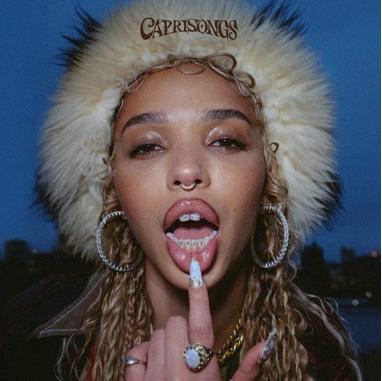
10 7 3 9 6 2 8 4 5 1
Fresh
Sophia Haydon-Khan (Undeclared)
47
Designer: Julia Galang (Design)
Denzel
Curry
Melt My Eyez See Your Future
Released March 25, 2022
Label Lorna Vista Recordings
Genre Conscious Hip Hop/Southern Hip Hop Tasty Tracks “Melt Session #1,” “Ain’t No Way,” “Troubles,” “Walkin”
Shortly after the start of the pandemic, Florida rapper Denzel Curry’s eyes melted. Not literally, of course. The metaphor is one that Curry uses to signify confronting his issues rather than running away from them, the first step towards reaching a sound state of mind. It’s also the one that inspired the material on his new record, Melt My Eyez See Your Future, his most conceptually fleshed out and cohesive project yet.
In a 2021 interview, Curry mentioned how each album he’s released up until this point was guided by the need to differentiate himself from the field, while simultaneously appealing to what fans liked. However, the pandemic led the 27-year-old rapper to directing all of his focus inward. This spiritual struggle to find both his true identity and his inner peace birthed music that was much more introspective than anything he’s released before.
The clearest difference between Melt My Eyez and his previous projects is in the instrumentals. Curry always had a flair for fusing new and old sounds of southern hip-hop – and it continues here – but this project sees him rapping over the jazziest production he’s ever had his hands on. Many of the songs feature piano and vocal samples that are quite soothing, a word that has rarely been associated with Curry’s music prior.
The drums are dusty and heavy sounding, as if they were plucked out of a Massive Attack or Portishead track. They clunk along in the background of songs like “Worst Comes To Worst” and the monster posse cut “Ain’t No Way,” providing the album a consistent bounce that carries from song to song. This album may feel muted when compared to 2019’s ZUU or 2018’s TA13OO, but there are still moments that give the album its bursts of energy. “Troubles” featuring T-Pain, “Zatoichi” featuring slowthai, and the first and second halves of “Ain’t No Way” and “Walkin” respectively all snap out of the smooth boom-bap style and offer something a bit more modern, while still staying well within the album’s established instrumental palette.
The meditative instrumentals lay the groundwork for Curry to walk on towards a better understanding of himself and his mental health. Walking forward to Curry embodies the mindset of not letting the present or past problems drag him down. It’s a strong motif recurring throughout the album, and although its “meaning” is quite obvious, having a simple mantra that can cut through the noise can be crucial. It’s clear how much “keep walking” has helped Curry push through his demons, as that sentiment fuels Curry’s journey throughout the album, and is overtly repeated on opener “Melt Session #1” and (obviously) on “Walkin.” Still, there’s a real ebb and flow to Curry’s mental state throughout the project. For every moment that he walks forward, there is an inevitable melting, a moment where his journey is brought to a momentary standstill.
“Melt Session #1” is where Curry lays everything bare, mentioning how he’s distant from his friends, feels shameful for objectifying women, and has had suicidal thoughts. He even reckons with being sexually assaulted at six years old, something only vaguely alluded to on TA13OO. “John Wayne” initially may read as a braggadocious, gun-toting anthem, but Curry’s exasperated delivery and lyrics about the murder of Ahmaud Arbery paint a depressing picture of the endless fight against police brutality and systemic racism just to survive. “The Last” is a doomed look at society as a whole, with Curry fretting about the pandemic, gun violence, and the impact of social media without being able to arrive at a comforting thought.
However, for every roadblock, relief follows soon after. When “The Last” starts to fade out, for instance, the hook on the next song, “Mental,” floats in on top of a smooth piano line and reminds him, and the listener, that “it’s all in your mental.” Keeping a clear head is a difficult thing to do, and the weight of the task is apparent to him on songs like “Angelz” and closing track “The Ills.” Though if he hasn’t overcome his demons, the moments of reaffirmation throughout the tracklist show how much progress he’s made, even if the results haven’t presented themselves yet.
The record’s displays stunning artistic growth from Curry, yet there are a few moments that don’t mesh with his changing style. The themes on “X-Wing” of Curry’s deep drive to gain material wealth work well with the album, but the track’s auto tuned vocals and violin-backed trap beat are jarring. “Sanjuro,” though, feels out of place in almost every way, essentially being a two-minute trap detour for Curry and featured artist 454 to get their bars off. It doesn’t do much to add to the album’s overall narrative, and it directly follows another short track, “The Smell Of Death,” that works much better due to its soulful beat.

Melt My Eyez See Your Future is not a typical Denzel Curry album. It’s a therapeutic odyssey through the mind of one of hip hop’s brightest stars, with less emphasis on mic presence and a greater focus on lyricism and cohesion. Most importantly though, by internalizing the “keep on walking” mentality, it’s the result of him journeying toward a brighter future.
Henry Bova (Journalism)
10 7 3 9 6 2 8 4 5 1 Fresh Spring 2022 Reviews 48
Charli XCX CRASH

Released March 18, 2022
Label Asylum/ Atlantic/ Warner UK
Genre Pop/Synth-pop Tasty Tracks “Crash,” “Baby,” “Yuck”
Mainstream pop music, as it exists, is an arena of sorts. One that’s built on theatrics and delusions of grandeur, as stars enter the stage clamoring over one another to shine the brightest. It’s an industry based on megalomaniacal consumption and overblown Swedish production, and yet, it still holds its audience captive. From big-budget tabloids to blockbuster performances, the act of superstardom is one of bells and whistles. Yet, even when executed with precision and finesse, the cookie-cutter formula for pop perfection seems nearly impossible to attain — making it all the more exhilarating to chase. Like all pop idolatry, it entails mastering the art of selling out, and if there’s anything that Charli XCX is ready to do, it’s sell out.
Despite existing within the pop music periphery, Charli has maintained a quintessential lifeline to the heart of the industry from its fringe. From nagging global smashes off tween idol soundtracks to coauthoring some of the biggest hits of the past decade, Charli is a veteran of the industry, and she’s maneuvered through her career with a tact that’s only grown more assured over time. Ever since 2016’s Vroom Vroom EP, her forays into the weirder, glitchier outskirts of pop music have ranged from commercially jarring to downright influential. Though following 2020’s how i’m feeling now, as well as a string of subsequent features, she saw herself encased into the withering, amorphous mass of “hyperpop.” What was
once a scattered curation of sounds and queer producers loosely bound together by A.G. Cook’s PC Music collective became an inlet for Charli to channel her influence onto the musical landscape. Slowly but surely, Charli became encaged in the Spotifyplaylist-turned-genre, yet her awe of pop stardom as a commercial product never faltered. So when she began the press run for her fifth studio album, CRASH, she took to Twitter to formally send in her two weeks notice from hyperpop, with bolder ambitions of “it girl”-isms on the horizon.
Following the international success of her crossover hit “OUT OUT,” CRASH was first signaled by the release of “Good Ones” last September. Leaning into the synthwave of the moment, everything surroundingthe track feels almost paint-by-numbers for bonafide hit-making. Rubbery bassline? Check. Punchy choreo? Check. Vintage, Satanic imagery? Check. Sure, it may not be anthemic as the deep cuts off her last full-length, but it’s fun! Even if formulaic, for “main pop girl” Charli, that’s exactly the point. CRASH plays into the recipe for pop superstardom, and though she does make the occasional tweak, part of the joy in the album is giving into the machine — selling out and finding release in the industry mainframe, letting the heady synths drive you to a point that can’t be intellectualized. On CRASH, Charli reaches for a primal itch that only pop music at its most generic and conducive to radio fodder can scratch, all while bagging several Top 40 hits along the way. And more often than not, she hits the mark.
Though the album cover finds Charli bloodied and at the whim of a car spiraling out of control, there’s a certain glamor in her centering herself squarely in frame. Like any superstar, she might be battered by the industry she finds herself in, but she’ll be damned if she doesn’t make it look good. Charli uses CRASH to examine her fixations on her own shortcomings, mostly in the context of finding herself in a new relationship. Yet, the poppy sheen thatcoats every track brings her back at the helm of her own narrative — though notably, the featured artists on the record do serve as a speed bump of sorts to its momentum. Pre-release singles, “New Shapes (feat. Christine and the Queens and Caroline Polachek)” and “Beg For You (feat. Rina Sawayama),” arelackluster mid-tempos that are unfortunately weakened by their contributors.
Charli’s collaborations in the PC Music scene had produced some of her most career-defining work, yet on CRASH, it’s her solo material that brings the real bravado back into the mix across the tracklist. “Baby” opens with an eloquent string selection that’s immediately devoured by Charli’s crooning over glossy synths. It’s a song driven by adrenaline that hits with the gusto of a sugar high. The dead space on the track where words should be are filled with lyrics looping ad infinitum, and yet, the moving parts of “Baby” click into place, building into one another with the precision and simplicity of a jigsaw puzzle. It’s genius, and it’s pop at its purest and most raw. The title track similarly opens the record to instantaneous chaos, powered through by new jack swing, electric guitars, and metallic vocal distortion. It’s sonically abrasive, almost to a point that feels deliberately belligerent. And yet, the record gleams and glistens, even when it feels as though it shouldn’t. “Every Rule,” the spiritual successor to 2019’s “I Don’t Wanna Know,” is then a flickering slow burn that twinkles as gently as it wrestles within itself. Directly succeeded by “Yuck,” Charli’s disco tribute to anxious-avoidant attachment styles everywhere is an immediate smash. Think “Levitating” by Dua Lipa, but with far more Tumblr-ridden angst. With an impossible earworm of a hook and an intrinsic fear of romantic commitment, Charli once again proves herself to be a prodigy in the school of pop songwriting.
CRASH never feels as willfully vapid or impersonal as your run-of-the-mill Eurotrash pop album, despite the recipes they both find success with. Charli is as insatiable as she is evasive, and it only makes following her as she careens off the highway all the more irresistible. Even when everything about the record cautions you to look the other way, CRASH is a spectacle that feels impossible to ignore. It’s one of subtle introspection that builds itself atop the pop orthodox. In a way, it feels so innate that you don’t even notice yourself getting hooked. But with both hands on the wheel and the brake lines cut, Charli dares you to take your eyes off of her.
Neeloy Bose (Bioengineering)
10 7 3 9 6 2 8 4 5 1 Fresh 49
CROSSWORD (Festival Edition)

ACROSS
3. What state is burning man held in?
4. Which town did Woodstock actually take place in?
6. What festival is Jack Harlow headlining this year?
7. Which formerly relevant rapper pioneered the failed Fyre Festival?
8. What’s the name of the Netflix documentary featuring Beyoncé’s Coachella performance?

DOWN
1. When we were ___ is an upcoming music festival in Las Vegas.
2. At what music festival did Kanye run the Easter Sunday Church Service?
5. What state is Firefly Music Festival in?
ZOOMED





Across: 3. Nevada 4. Bethel 6. Forecastle 7. Ja Rule 8. Homecoming Down: 1. Young 2. Coachella 5. Delaware
Can
1st Row: Kacey Musgraves Golden Hour Adele 30 King Princess 1950 2nd Row: Billie Eilish Happier Than Ever Whitney Houston Whitney Houston Charli XCX Pop 2 Spring 2022 Etcetera 50
you tell which six album covers we’ve zoomed in on?
LOCAL PHOTO

Knuckle Puck, BNL?
SPOTIFY PLAYLIST
We’ve put together some of our favorite (and least favorite) songs from Tiktok inspired by “15 Seconds for Fame: The Impact of TikTok on The Music Industry.”
Find the playlist on our Spotify page @tastemakersmagazine!
• Sofia Maricevic (Finance and Accounting)
FIND OLIVIA
abcdefu - Gayle
I AM WOMAN - Emmy Meli space girl - Frances Forever Backyard Boy - Claire Rosinkranz MONEY - LISA
SAD GIRLZ LUV MONEY Remix (feat. Kali Uchis and Moliy) Myself - Bazzi
Vacation - Dirty Heads
my ex’s best friend (with blackbear)Machine Gun Kelly
In My Head (feat. Travis Barker)24kGoldn
First Class - Jack Harlow
Therefore I Am - Billie Eilish
We’ve hidden Olivia somewhere in this issue. Find her and maybe something cool will happen...
FOLLOW US
One More Weekend - Maude Latour
The City - ella jane
she’s all i wanna be - Tate McRae
Romeo & Juliet - Peter McPoland
Dizzy (feat. Thomas Headon and Alfie Templeman) - chloe moriondo

I Don’t Do Drugs (feat. Ariana Grande)
- Doja Cat
Beautiful Mistakes (feat. Megan Thee Stallion) - Maroon 5
Stay Next To Me (with Chelsea Cutler)Quinn XCII
Like what you read? Check us out online.
tastemakersmag.com @tastemakersmag
Photo by Risa Tapanes (Music Industry and Communications)
1. 2. 3. 4. 5. 6. 7. 8. 9. 10. 11. 12. 13. 14. 15. 16.
18. 19. 20.
17.
51















 Claud, Brighton Music Hall
Photo by Kelly Thomas (Environmental Science)
Claud, Brighton Music Hall
Photo by Kelly Thomas (Environmental Science)
 SE SO NEON, Middle East
Photo by Ana Sang (Music Industry)
SE SO NEON, Middle East
Photo by Ana Sang (Music Industry)




















































































































































 Snail Mail, Royale
Photo by Emily Kobren (Design)
Snail Mail, Royale
Photo by Emily Kobren (Design)















 • Henry Bova (Journalism)
• Henry Bova (Journalism)


 Chelsea Cutler, Roadrunner
Photo by Coby Sugars (International Business)
Jojo, Roadrunner
Photo by Faith Nguyen (Architecture)
Chelsea Cutler, Roadrunner
Photo by Coby Sugars (International Business)
Jojo, Roadrunner
Photo by Faith Nguyen (Architecture)
 Eph See, The Rockwell
Photo by Mukki Gill (Mechanical Engineering and History)
Eph See, The Rockwell
Photo by Mukki Gill (Mechanical Engineering and History)

















 Summer Salt, Somerville Theater
Photo by Ashlynn Braisted (Computer Science and Design)
Sammy Rae & The Friends, Royale
Photo by Amanda Stark (Behavioral Neuroscience)
Summer Salt, Somerville Theater
Photo by Ashlynn Braisted (Computer Science and Design)
Sammy Rae & The Friends, Royale
Photo by Amanda Stark (Behavioral Neuroscience)
 Maude Latour, Sonia
Photo by Taliyah Fox (Game Art and Animation)
Maude Latour, Sonia
Photo by Taliyah Fox (Game Art and Animation)
 joan, Brighton Music Hall
Photo by Olivia Leon (English and Communications)
joan, Brighton Music Hall
Photo by Olivia Leon (English and Communications)













